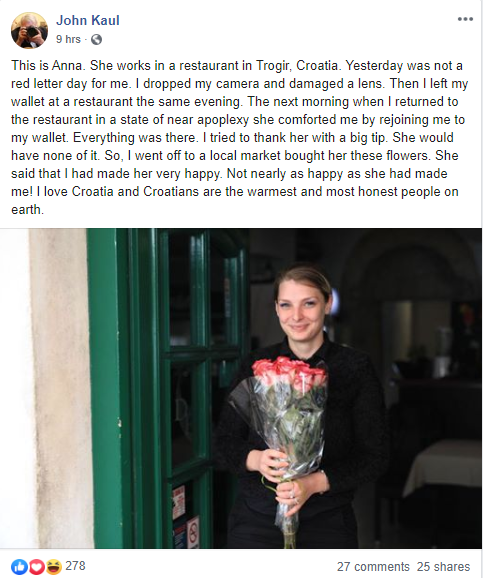Trogir, Marked by Masters: Red Coral Jewelry from Mišel
November 28, 2019 - TCN meets the modern masters of Trogir in our latest series. First up, the red coral king Marin Miše of Mišel jewelry.
Earlier this week the town of Trogir unveiled a new branding strategy, visual identity, and promotional video, becoming the first coastal destination in Croatia to use branding at such a serious and professional level.
The result of the creative process is the slogan “Marked by Masters”, influenced by the continuity of life in Trogir for over 3600 years, the great masters who have operated in Trogir since the Middle Ages, and the indelible traces that these masters leave.
While the medieval master builders, sculptors, and stone-cutters who lived and created in Trogir left their mark through the traces of graffiti around the town, centuries later, we can find Trogir’s modern masters thriving as artists, chefs, jewelers, tailors, and klapa singers, to name a few.
Today, we meet Marin Miše of Mišel, a master of red coral jewelry.
Wandering Trogir’s twisted streets, it’s easy to miss the unassuming entrance to the Mišel workshop, nor would anyone presume that the expertise of five generations of red coral jewelers could be found behind their doors.
Namely, Mišel is a family-owned business with a tradition lasting over 100 years. Run today by Marin Miše and his two sisters Marina and Vesna, the family’s jewelry tradition began by great grandfather Duje in the 19th century, though the family’s first storefront came only in 1932 when grandfather Filip opened a shop in Split.
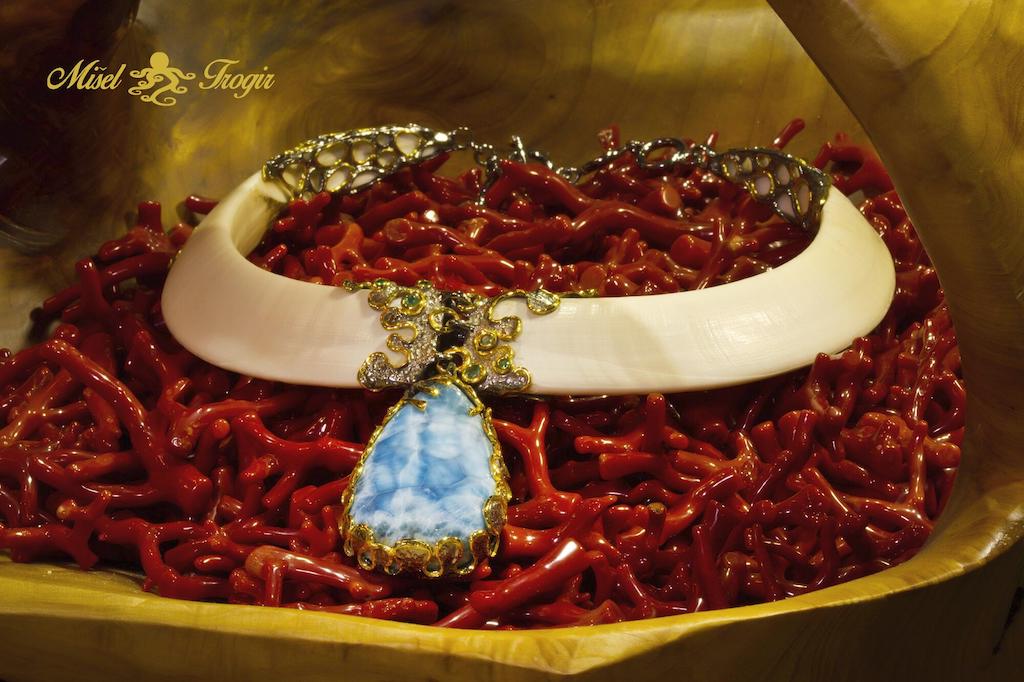
“Duje had three sons: Marina, Filip and Vjeko, who were famous jewelers, though Filip was the most famous. In 1937, when Roma and Hajduk played in Split, he gave Hajduk's best player Mario Krulz a gold watch. He had his shop on Morpurgova poljana in Split. My grandfather Aleksander was Marina’s son. He was born in 1920 and at the age of 12, he made his first gold brooch. In 1962, he took part in an exhibition in Milan, where he presented two models of gold rings and garnered all praise. My grandfather opened his first store in 1970 near Trogir's southern city gate. In the 1980s, the shop moved closer to the current location, which has been at Gradska ulica 22 since the early 1990s. Unfortunately, my father Gordan, who was also very successful in running the business, died early,” Marin recalled in an interview for Slobodna Dalmacija back in 2016.
Marin’s mother and father were killed in a car accident when he was 18. He has been determined to continue their craft ever since.
Today, Mišel creates jewelry and art pieces from precious metals, gems and other natural materials borrowed from the earth and the sea.
“I travel the world in search of high-quality gemstones and corals. Mines in India, Asia, Africa, and South America supply the perfect materials for our collection of cosmopolitan jewelry that exudes the Mediterranean spirit,” Marin says.
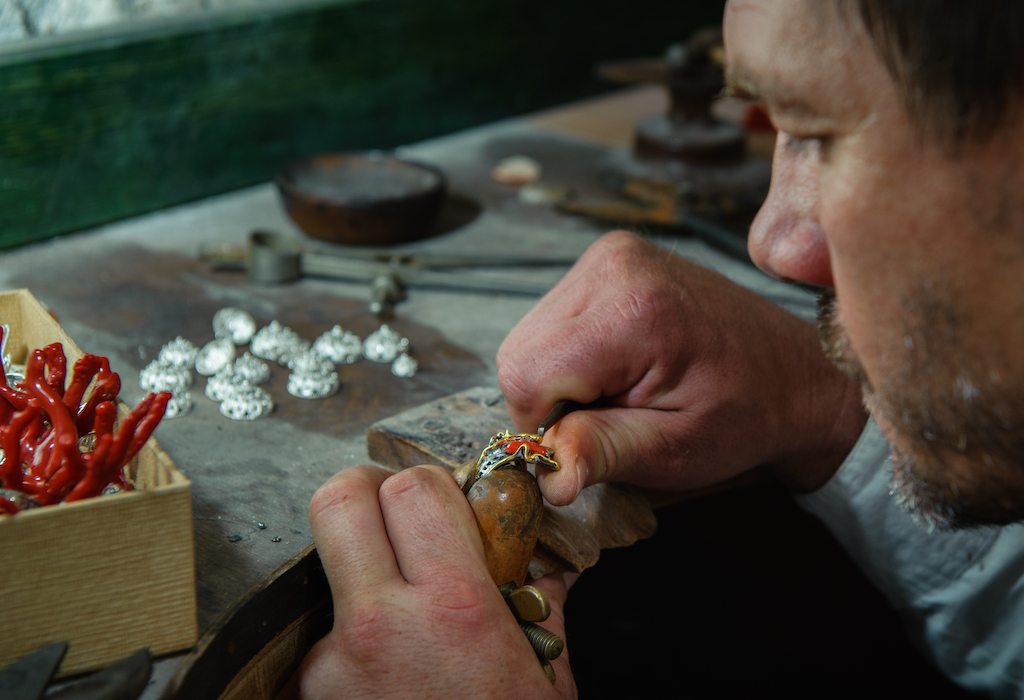
Given he has the right inspiration and materials, Marin claims he can craft a piece of jewelry in just a few hours - moments even. However, more complex pieces can see the process take years. This, of course, depends on how easily the materials are acquired and how grueling the artistic process is based on the needs of the client.
Marin gathers his inspiration from nature, which can be seen in Mišel’s considerable collection of red coral jewelry, their most recognizable product.
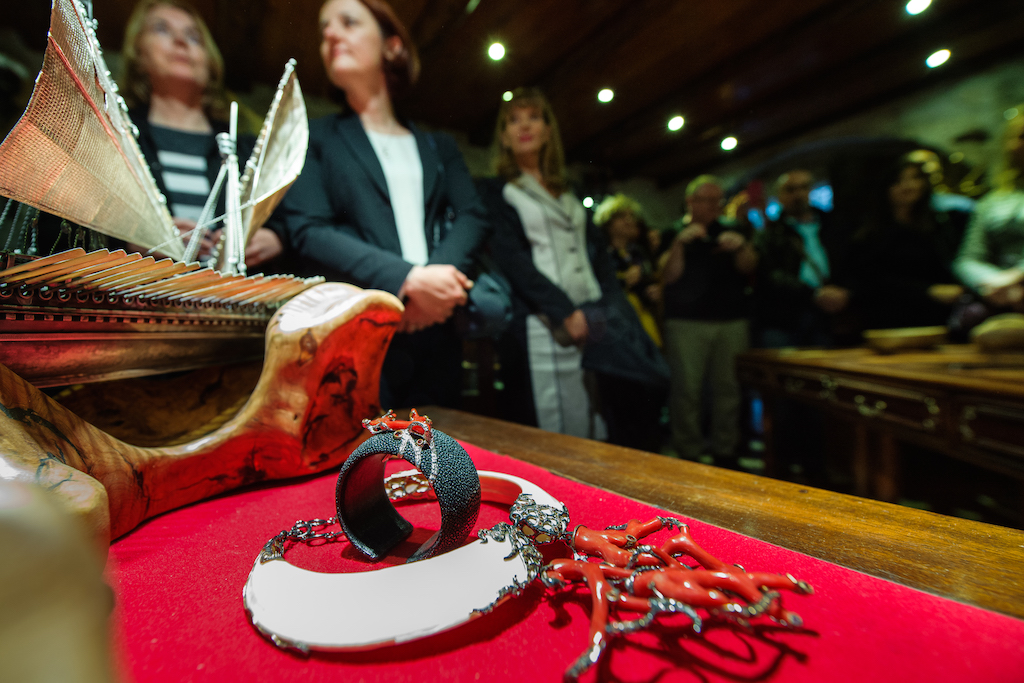
Thanks to Mišel’s unique coral, they’ve been lucky to travel not only around Croatia, but the world. In addition to the mineral fairs in Split and Zagreb, Mišel is a regular in the United States at the Tuscan Gem Show, the largest in the world.

“My jewelry pieces are not just jewelry; they are small sculptures. I design them and craft them with care and love. They will be recognized by people who feel a strong connection to Mother Nature and the Creator. More than one hundred years of keeping the tradition and following modern trends is no small feat,” Marin says.
Mišel is currently preparing for the next Tuscan Gem Show in January 2020, but until then, you can find them in the heart of Trogir, at Gradska ulica 22, or in the lobby of luxury hotel Le Meridien Lav in Split. And if you're not in Croatia? Take a look at the creative coral collections on Mišel's website.
To read more about the modern masters leaving their mark on Trogir today, as well as the latest from this gorgeous UNESCO World Heritage Site, follow the dedicated TCN Trogir page.
Marked by Masters: Trogir Unveils Stunning New Branding
November the 25th, 2019 - ‘’Our wish through branding is to become one of a number of similar destinations in the Adriatic and to become recognisable by the variety of special features we have,’’ stated Mayor Ante Bilic when discussing Marked by Masters, Trogir's new brand.
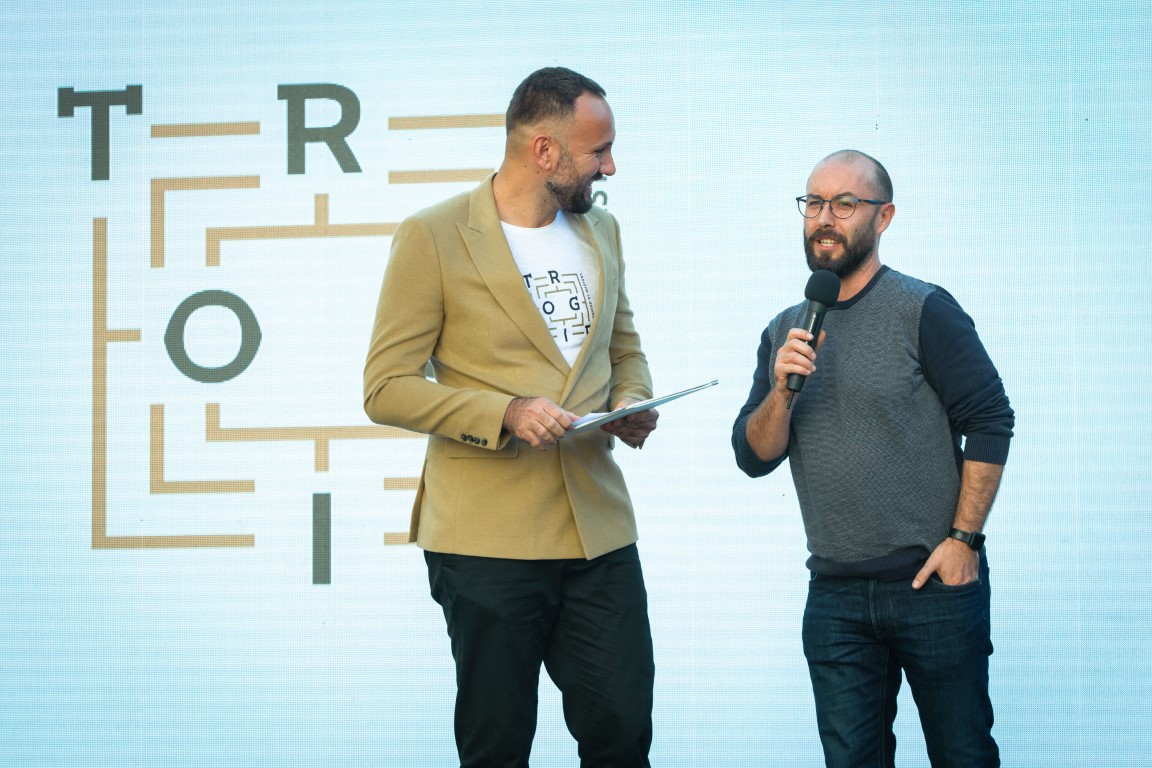
The City of Trogir unveiled a new branding strategy, a new visual identity and a new promotional video for the city. At an event in a crowded town square, the professional public and other citizens were presented with the project that Trogir made as the first city in Dalmatia. After a year and a half of work involving more than a hundred people in various ways, Trogir has become the first coastal destination to begin branding at such a serious and professional level.
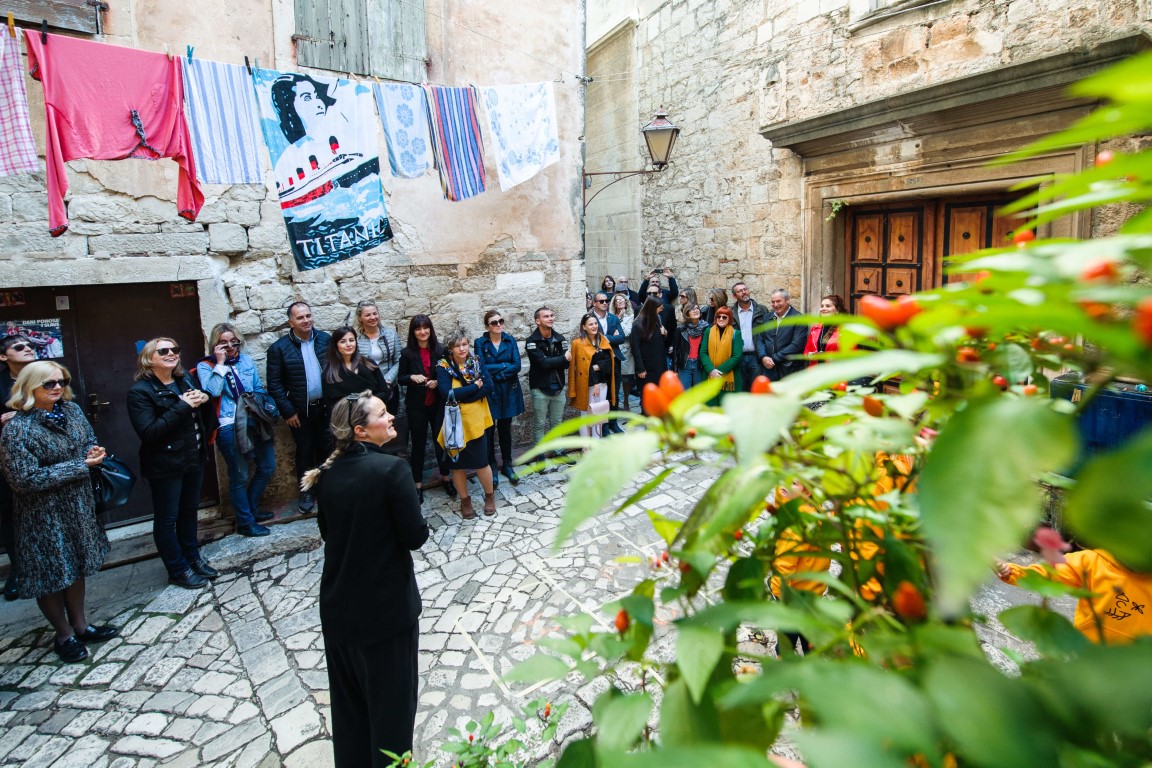
The aim of the project was to identify the features that distinguish Trogir from other cities and to shape them into a new slogan, logo and narrative that will be talked about primarily by the residents of Trogir, those who work in tourism, residents of this Dalmatian region, local and foreign tourists, and the media. The idea is that by using heritage and local specialities in a contemporary context and by enhancing authentic values, the city can be positioned not only as one of the most desirable Croatian destinations, but also Mediterranean destinations. The project is modelled after many European destinations, such as Glasgow, Eindhoven, Bologna, Berlin..., which, after branding, recorded a number of positive economic effects, all of which Trogir also wants to achieve.
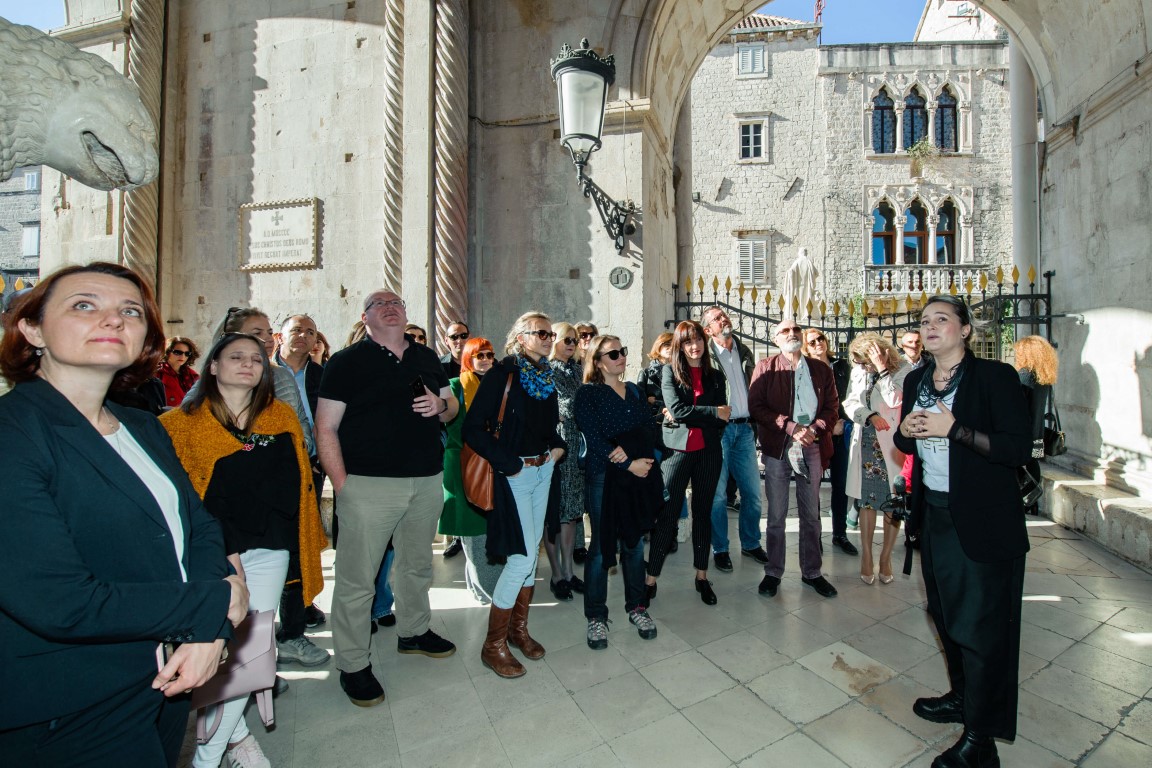
“We decided to embark on this project because, by looking at foreign examples, we realised the positive impact that quality branding has on the lives of local people. We’re also aware that the market is changing and that only those who respond to the needs of today's tourists will be able to continue to develop without compromising the quality of life of local people. We wish, through branding, to profile ourselves among a number of similar destinations in the Adriatic and to become recognisable by the range of special features we have. Trogir deserves it primarily for the people who live here and create it, its beauty and heritage and the fact that it has been on the UNESCO list for 22 years,’’ said Mayor Ante Bilic, adding:
‘’We want to stop Trogir from becoming a fast food destination. I’m proud that we, and on such a high level, were the first in Dalmatia to launch such a complex project which is based not only on new and beautiful visuals, but on a strategy that should guide us in the coming years, and, I repeat, bring great benefits to Trogir and to our fellow citizens. There are still many steps ahead of us and we’ll certainly be learning as we go, but I hope that we will soon become a positive example and that other cities will follow us.’’
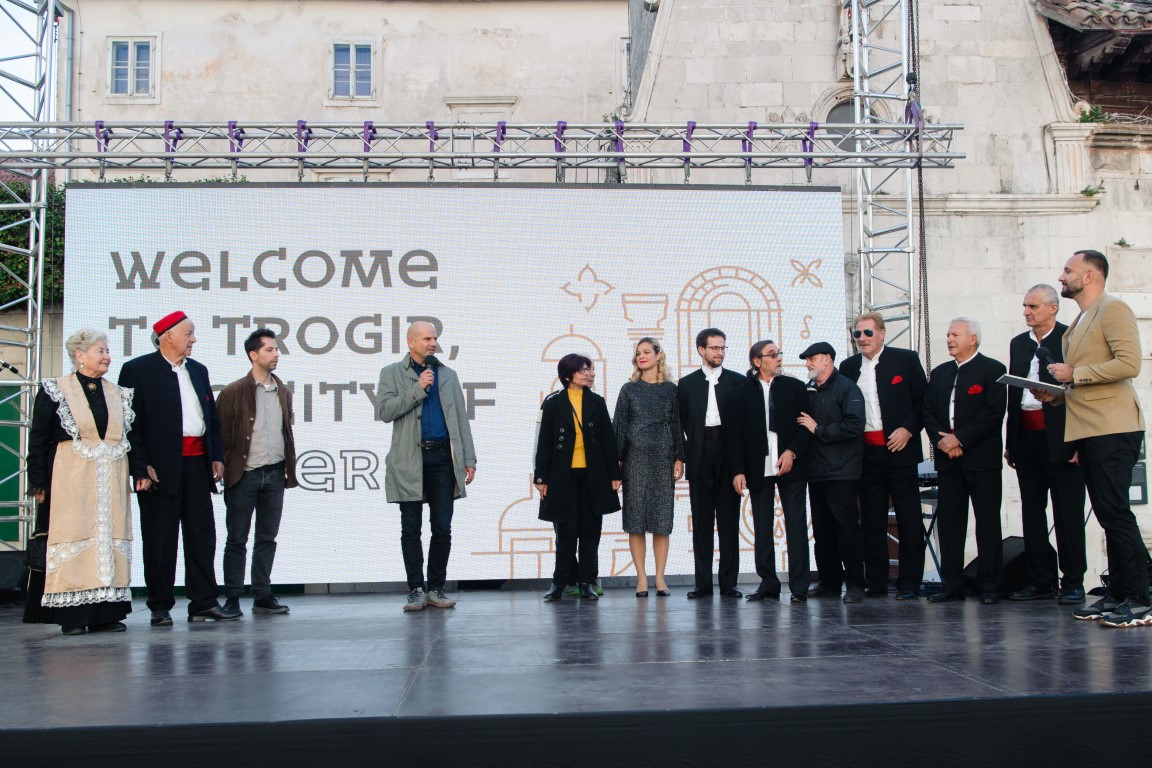
The project was worked on by the internationally award-winning Zagreb-based Fabular, a member of the REBRAND Hall of Fame™ Professional Association, among the top 25 brand consultants in the world, led by branding strategy director Anja Bauer, author of the proprietary "8 Branding Ingredients" formula and leading branding expert in Croatia.
In a process that lasted for more than a year, an extensive interdisciplinary survey was conducted on the perception, potential and challenges of Trogir, which analysed historical material, conducted surveys with locals and tourists, and talked to all meritorious people in the city - from historians, craftsmen, caterers, museum staff, City, Tourist Board, tourist guides…
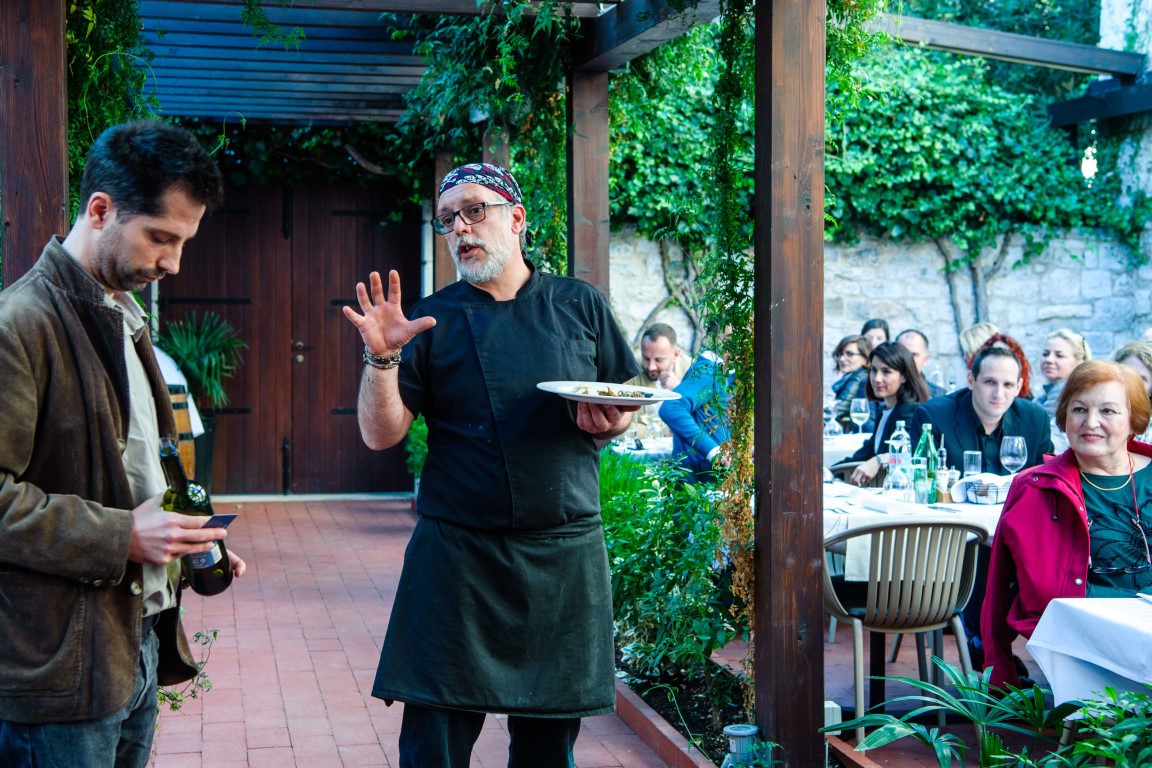
"Working on Trogir’s branding was interesting, intriguing, invigorating, instructive. Trogir is a place that fascinated us with its beauty and its depth of meaning and we all enjoyed creating its story. Through our research, we’ve identified three key things, impressive features that make up the identity of Trogir. These are the continuities of life over 3600 years, then the great masters who have been operating there since the Middle Ages up to this day, and the indelible traces that these masters leave. These are the three main elements, the so-called sweet spot of Trogir, based upon which we created the strategy,’’ said Anja Bauer, owner and creative director of Fabular.
The author of the new visual identity of Trogir is Maja Bagic Baric, one of the most respected Croatian designers. Fabular found the signature of 13th-century master Muscardell in the interior of the Cathedral of Trogir. Nikola Đurek, Faculty Professor in Split and Zagreb, who is otherwise the most famous Croatian typographer, created a new font. In the creative process, a new city slogan was created: "Marked by Masters".
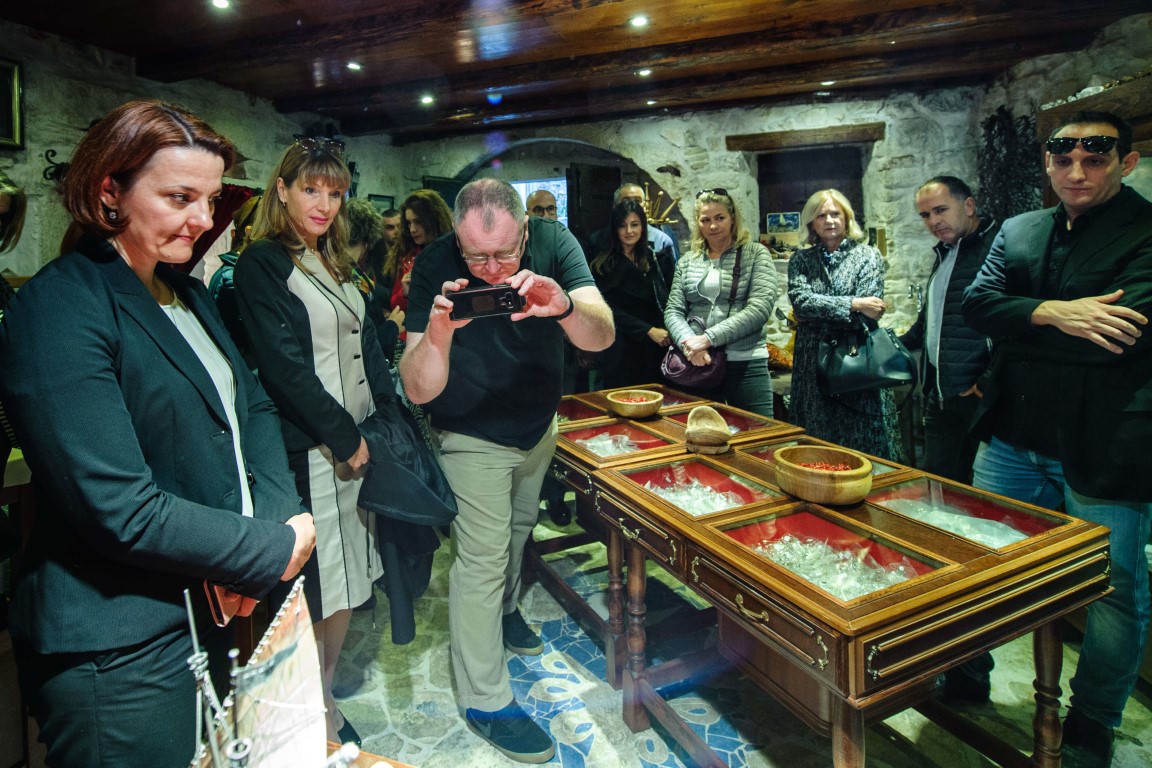
"The new visual identity of the city of Trogir outlines traces carved in stone and unique, world-class art. Inspiration was found in old traces, signatures and notes left by the medieval masters at the Cathedral of St. Lawrence and the Church of St. John the Baptist.
It is a trace of a mark in time that bears witness not only to the supreme creativity, but also to life and play - a prayer - a sailboat and a permit and the completion of construction of Radovan’s stamp. The logo depicts a the lines for a traditional game called Trlja (Mlin) carved in stone; it is one of the common clues left by the masters at St. Paul's Cathedral. St. Lawrence and the Church of St. John the Baptist.
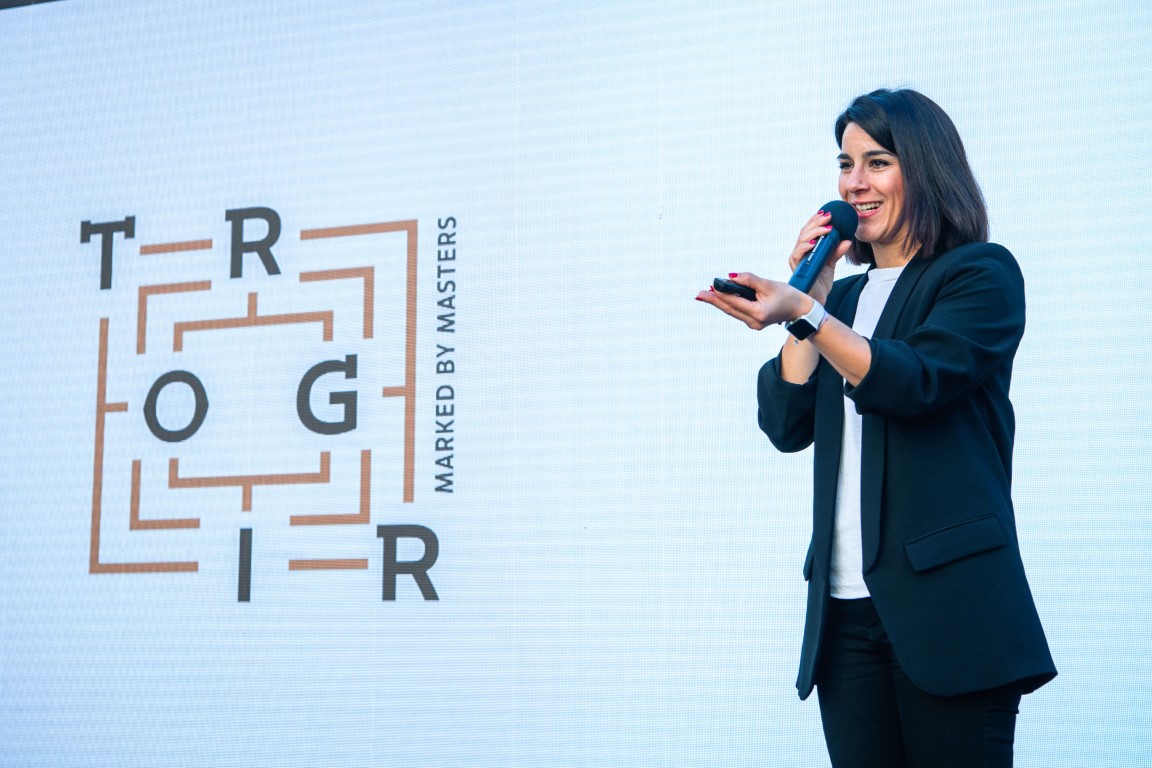
It tells us about the simplicity and beauty of living in Trogir, and points out that in addition to magnificent buildings, the beauty of everyday life in Trogir is equally inspiring. A system of pictograms has been developed, inspired by the urban and artistic heritage of the city of Trogir, as well as outlining everyday life through the traces and graffiti left by the medieval masters builders, sculptors and stone-cutters who lived and created things here, who, centuries later, still vividly testify to the intertwining of the sublime and the living,’’ explained Anja Bauer.
The project has also seen a new promotional video of Trogir created, and behind the footage is the multi internationally award-winning Split cinematographer Milan Latkovic. The shooting lasted for 30 days, with five hours of footage, the first of which was created in a series of videos showing Trogir in a new light.
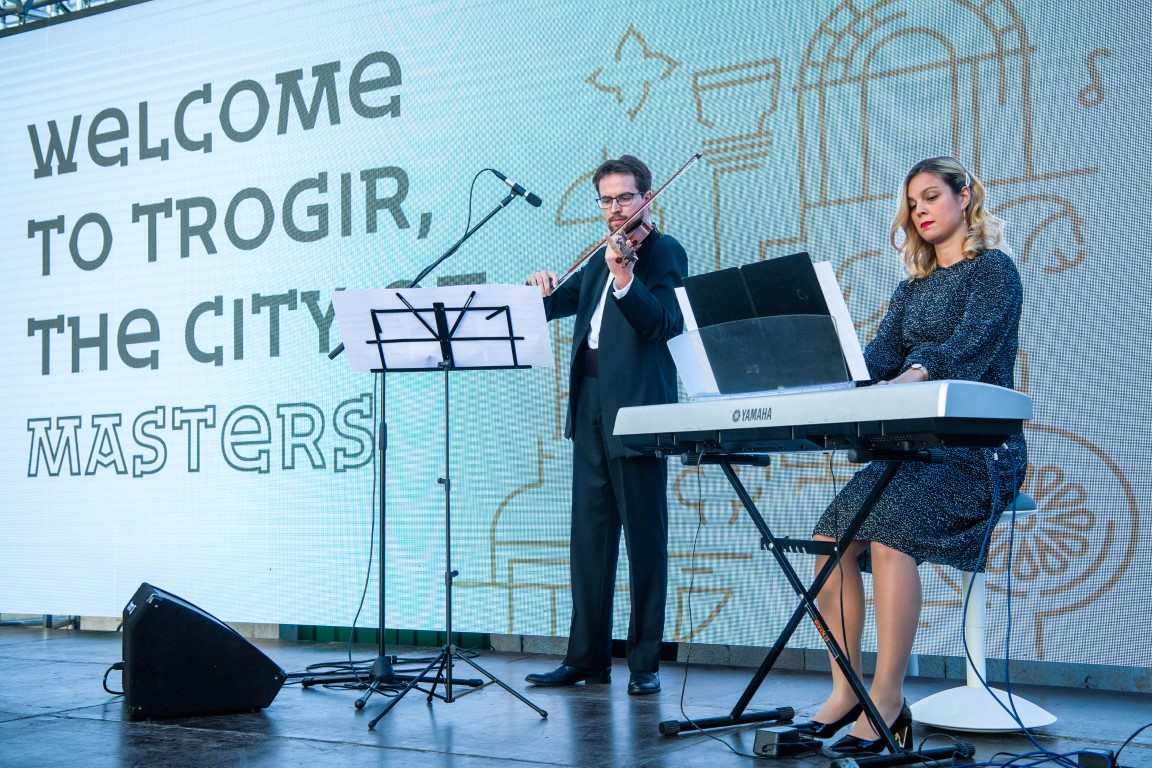
The video is special in that it involves many people, with an emphasis on craftsmen (masters), both those who created it, and many contemporary craftsmen - sculptors, painters, coralers, tanneries, as well as children from Trogir’s schools and kindergartens, athletes, grandmothers from the market and many others, olive growers, beekeepers, winemakers, chefs ..., all the people who make the city what it is.
"The filming was interesting and fun, and sometimes even dangerous, such as when we went into the apiary in shorts. There were also ankle twists along Trogir’s cobbles, the clouds knew how to cover the sun when it was not needed, but we still managed to capture everything just as we’d imagined.
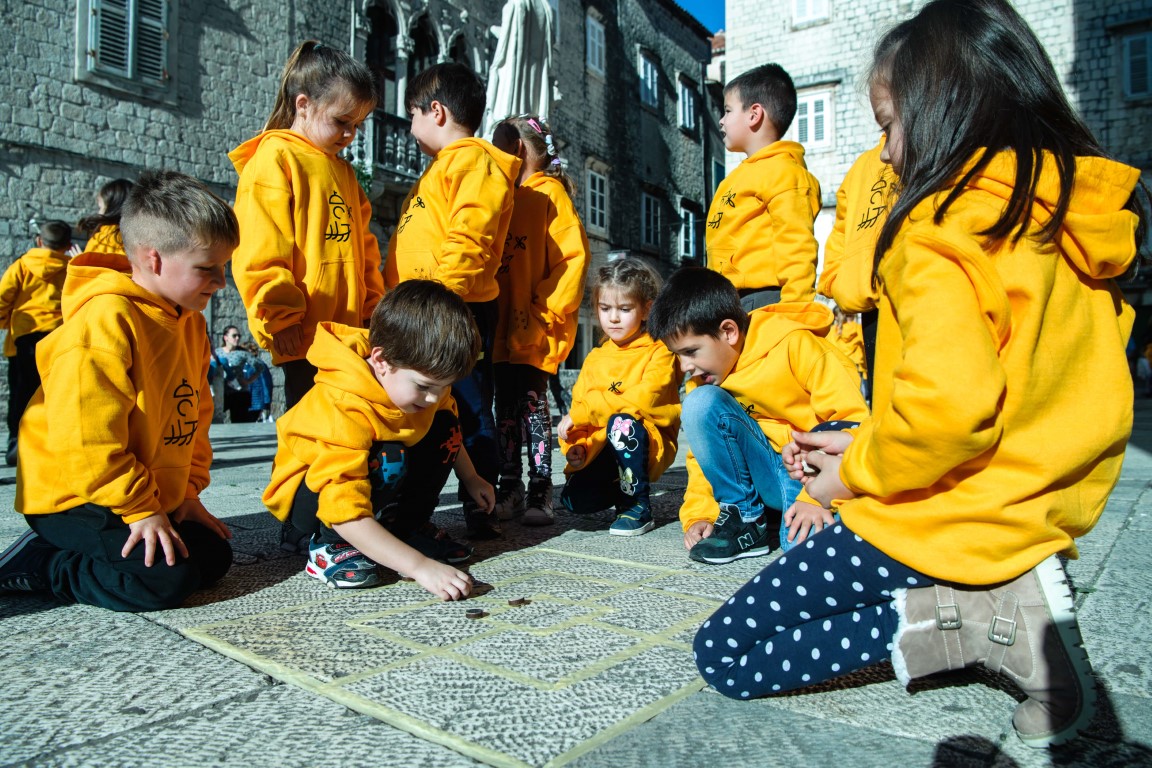
There were days when we were filming at 12 o'clock, which at 35 degrees and when the sun is at its most fierce can be quite exhausting, but in the lives of me and my colleague Ratko Ilijic, this is common. All for a good shot. We met a lot of great people from Trogir and learned many things we didn't know about the city, even though we’d been there so many times before. We were most impressed by the craftsmen who work there and who haven’t been influenced by the negative effects of mass tourism, but who instead stick to tradition. It was challenging to reduce five hours of material don to just three minutes, but modern trends want short forms. Fortunately, we have so much great stuff captured that the plan and desire is to make a series of small videos in the next year in which we’ll show everything we filmed. It would be a shame not to see all that, too,’’ said Milan Latkovic.
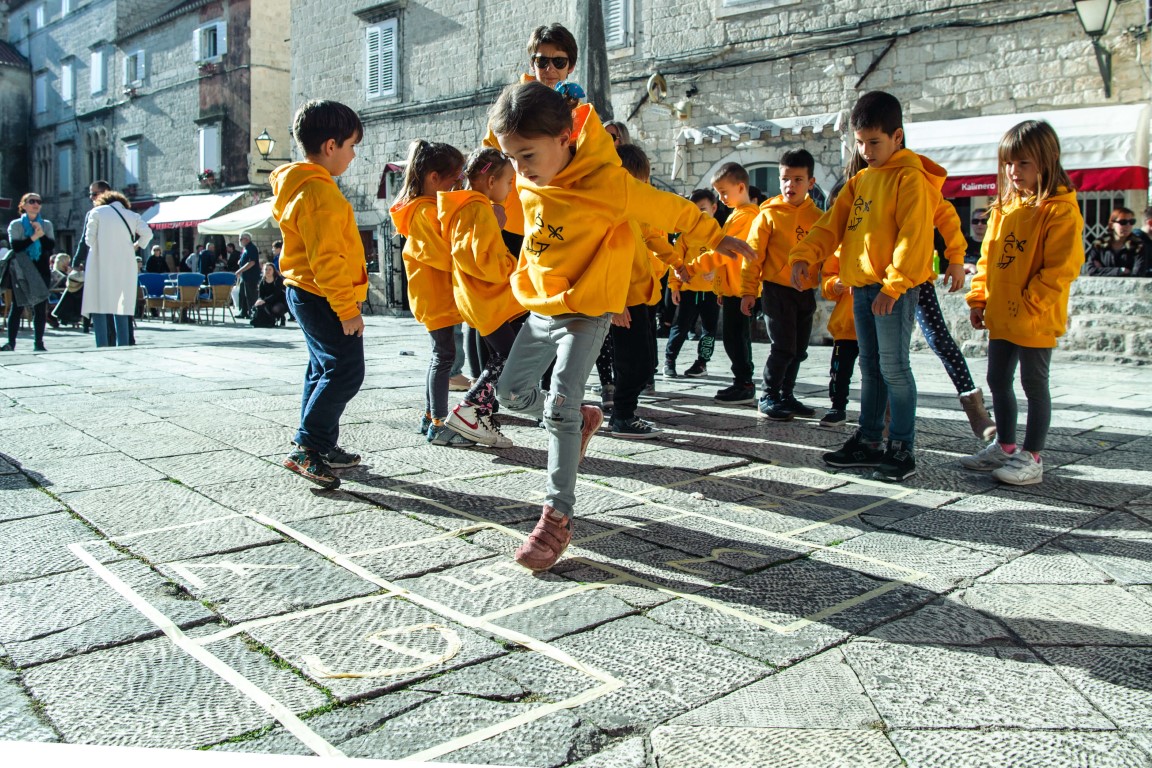
Many heads of tourist boards, tour guides, hotel and agency managers and other tourism professionals had the opportunity to visit the city for the first time today in a so-called masterful tour through which all the special features of the new branding of the city were shown, and the tour was led by an experienced guide, a Trogir native, Ana Tomić. The famous Trogir chef Robert Predrag Žmire also joined the project, not only as a face in the video, but also as the author of a special, modern menu made up of traditional Trogir dishes. For this occasion, children from kindergartens in Trogir worked on a project to play traditional games such as Trlja, with the aim of preventing them from escaping collective memory.
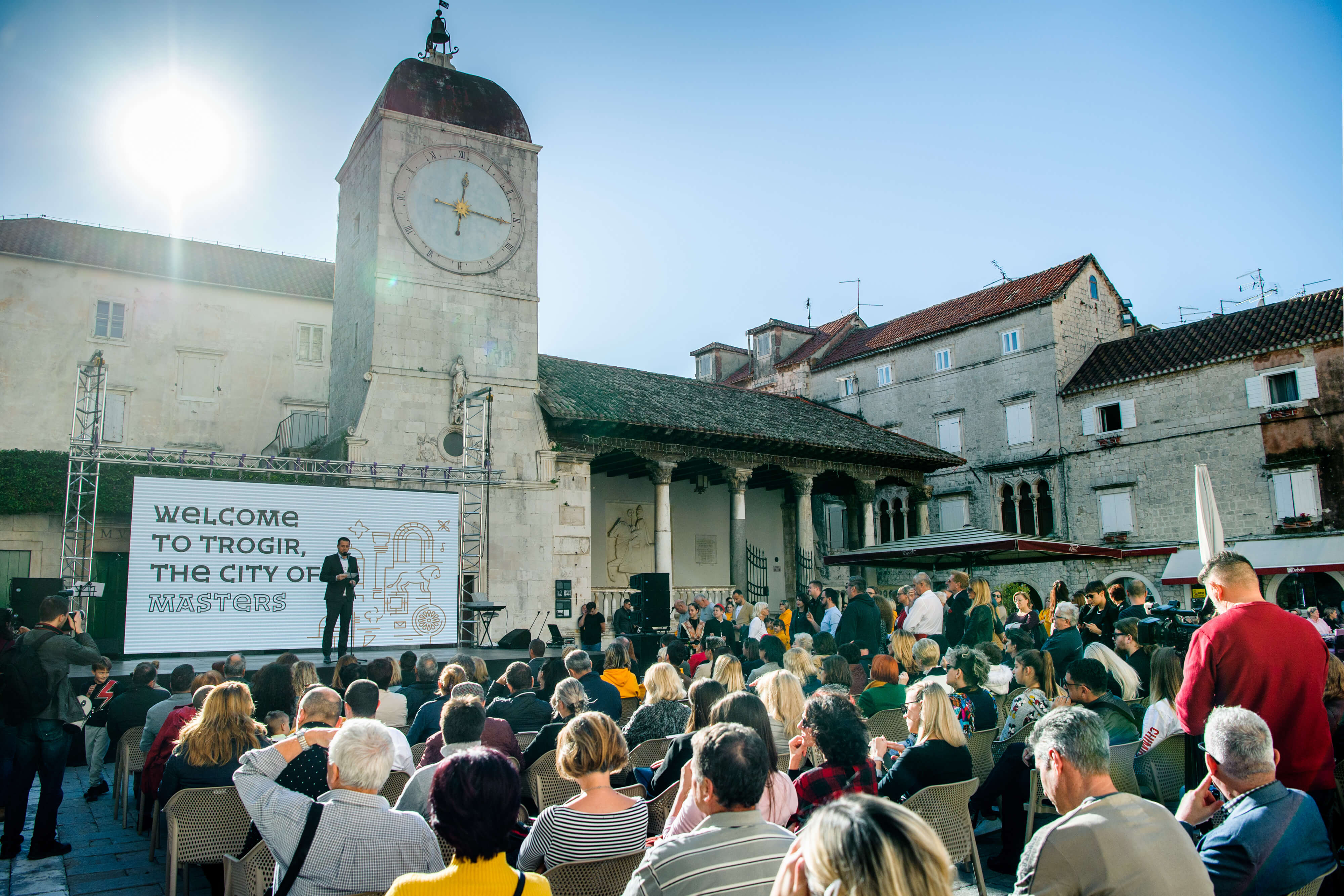
‘’The branding of a destination is very important, especially when it comes to tourist cities, for which tourism is one of the main branches of the economy. I really liked what I saw in Trogir and this is the direction that all Dalmatian cities should go in in terms of developing their brand, and I can say that Split is going in that direction as well,’’ said Alijana Vukšić, director of the Split Tourist Board.
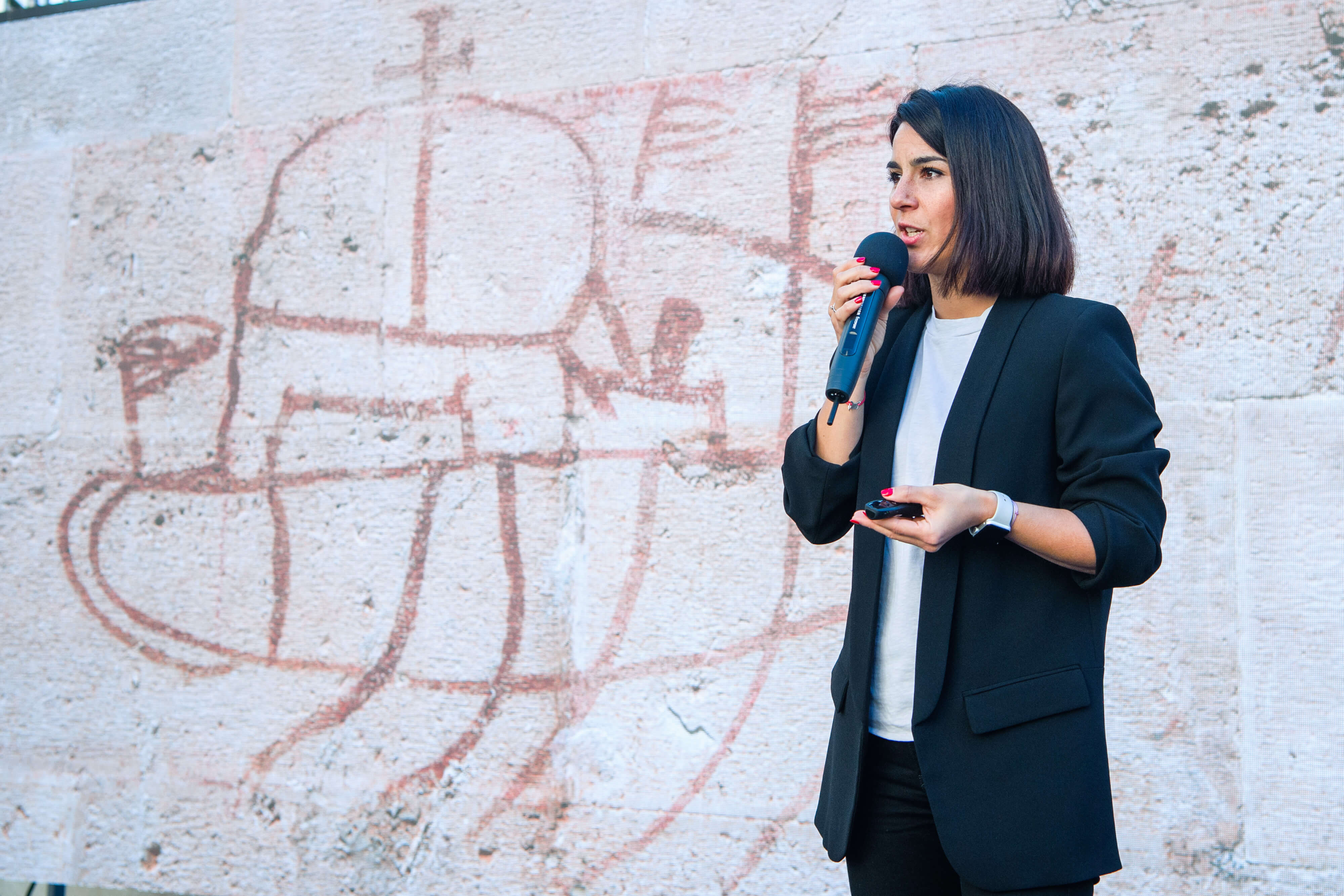
In the coming years, the implementation of this project will follow, aiming at what everyone wants - to attract the more affluent, the so-called cultural tourists who stay longer and spend more through the revitalisation of neglected and hidden locations, both in the core and beyond, then the lengthening of the season, holding ‘’master’’ workshops, organising various events which encompass Trogir’s new brand throughout the year, cooperating with universities, hosting art colonies, and sports competitions.
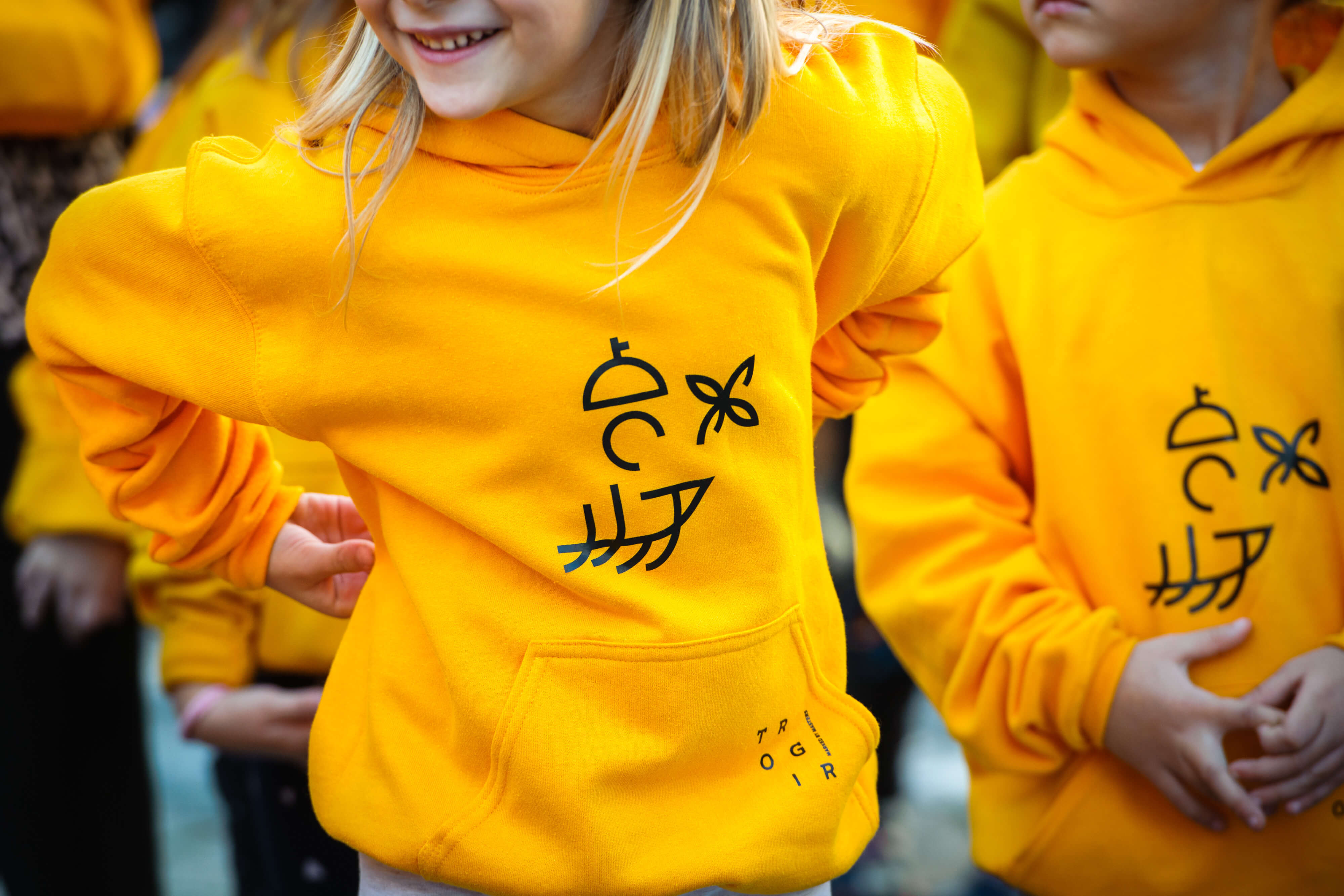
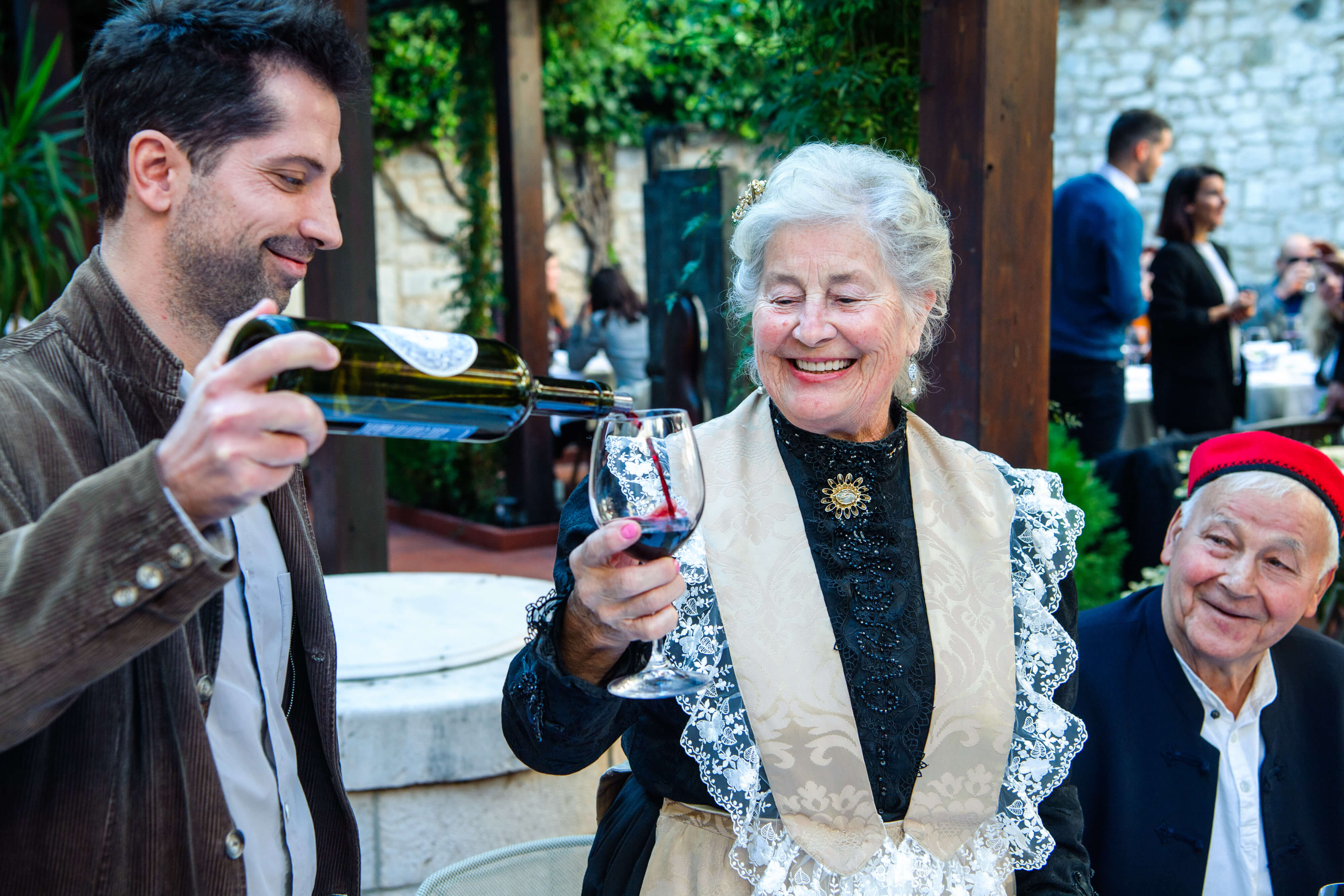
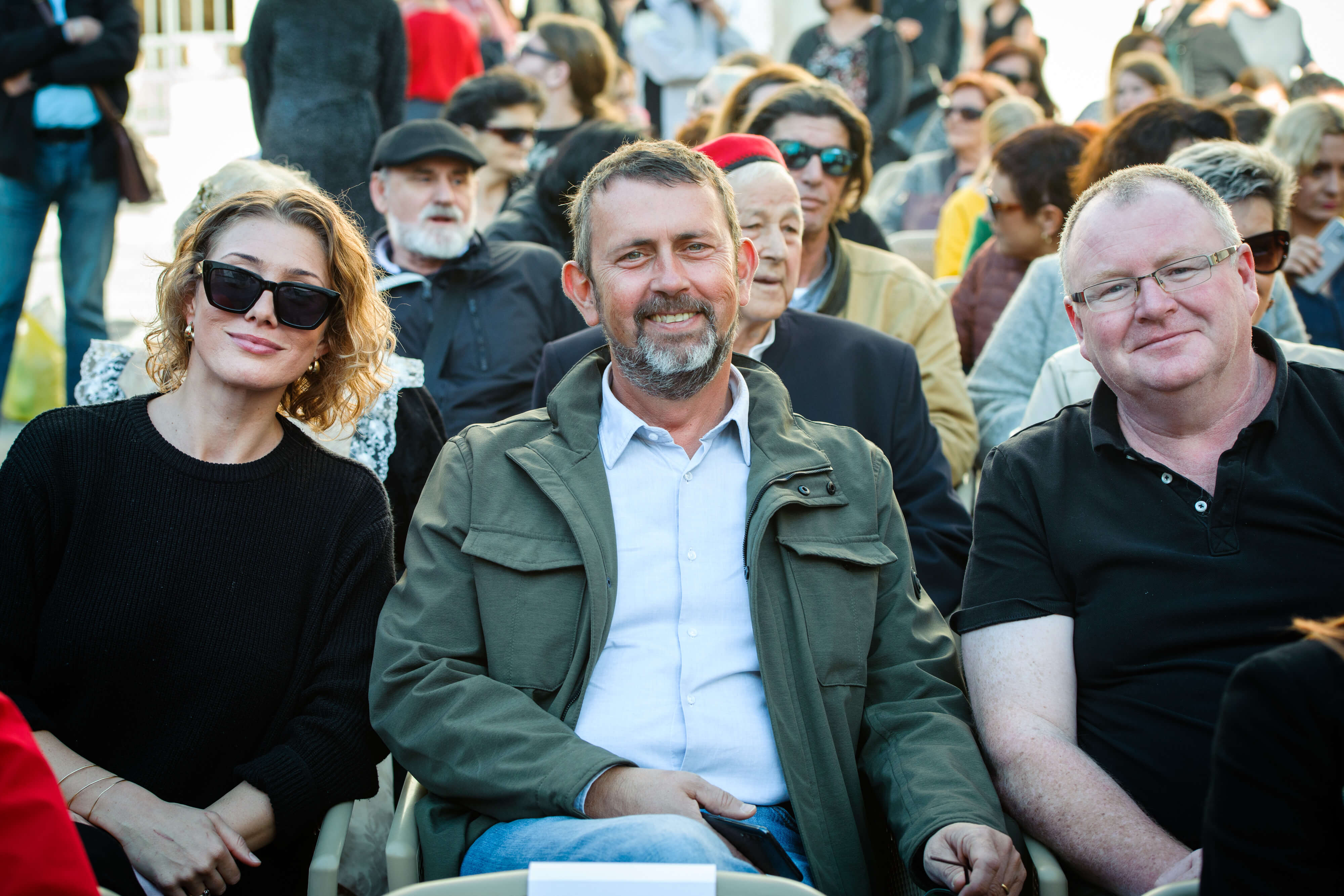
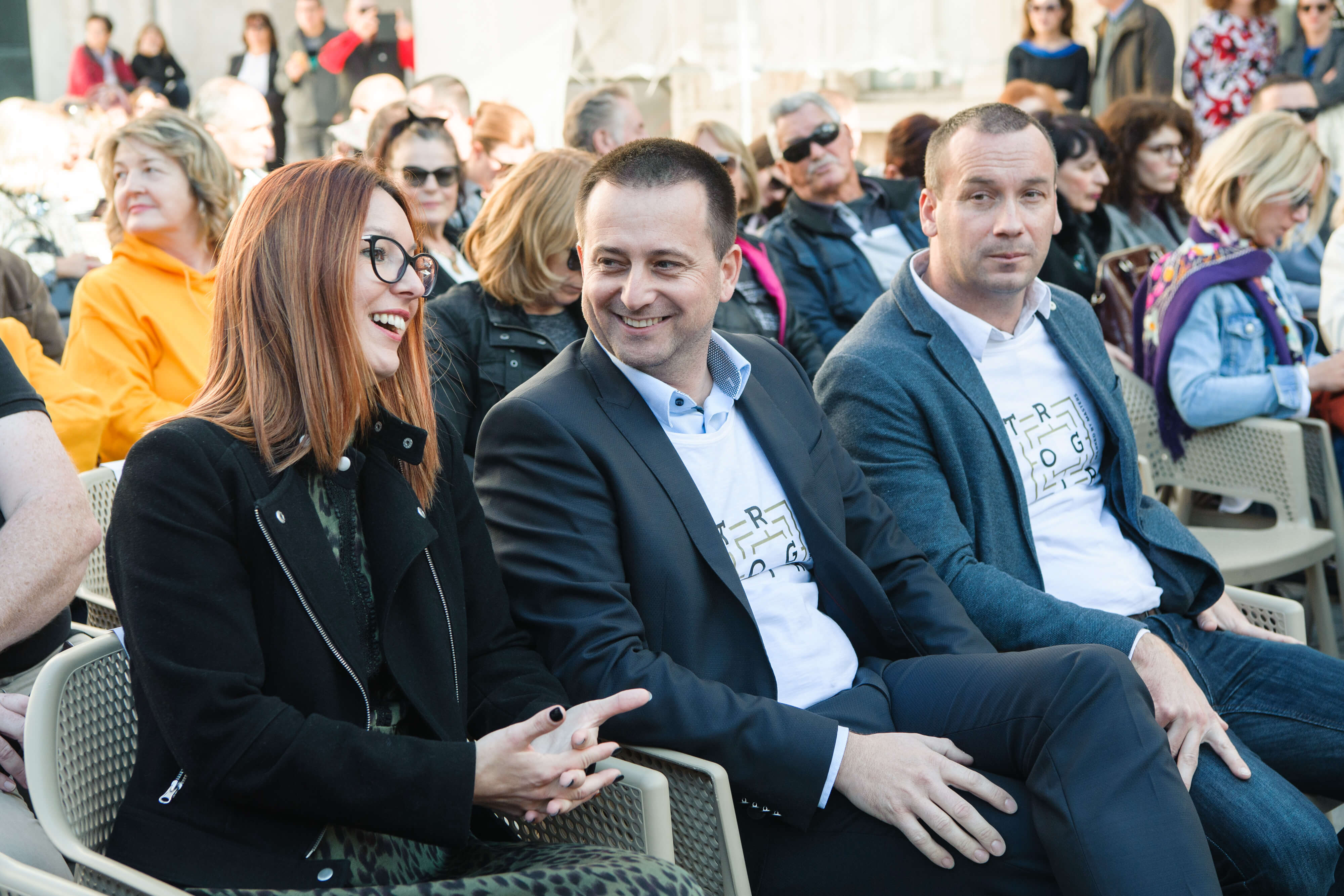
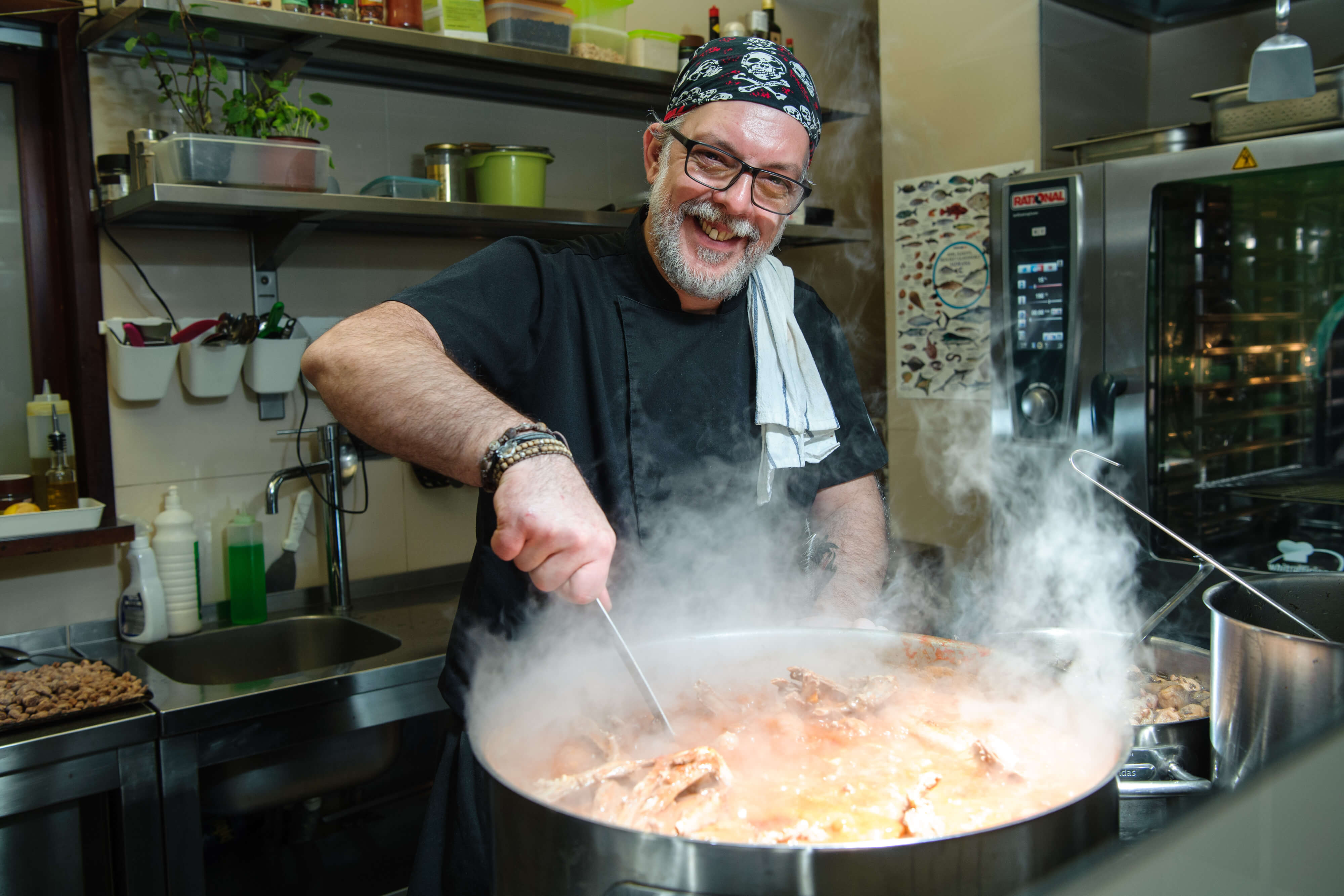
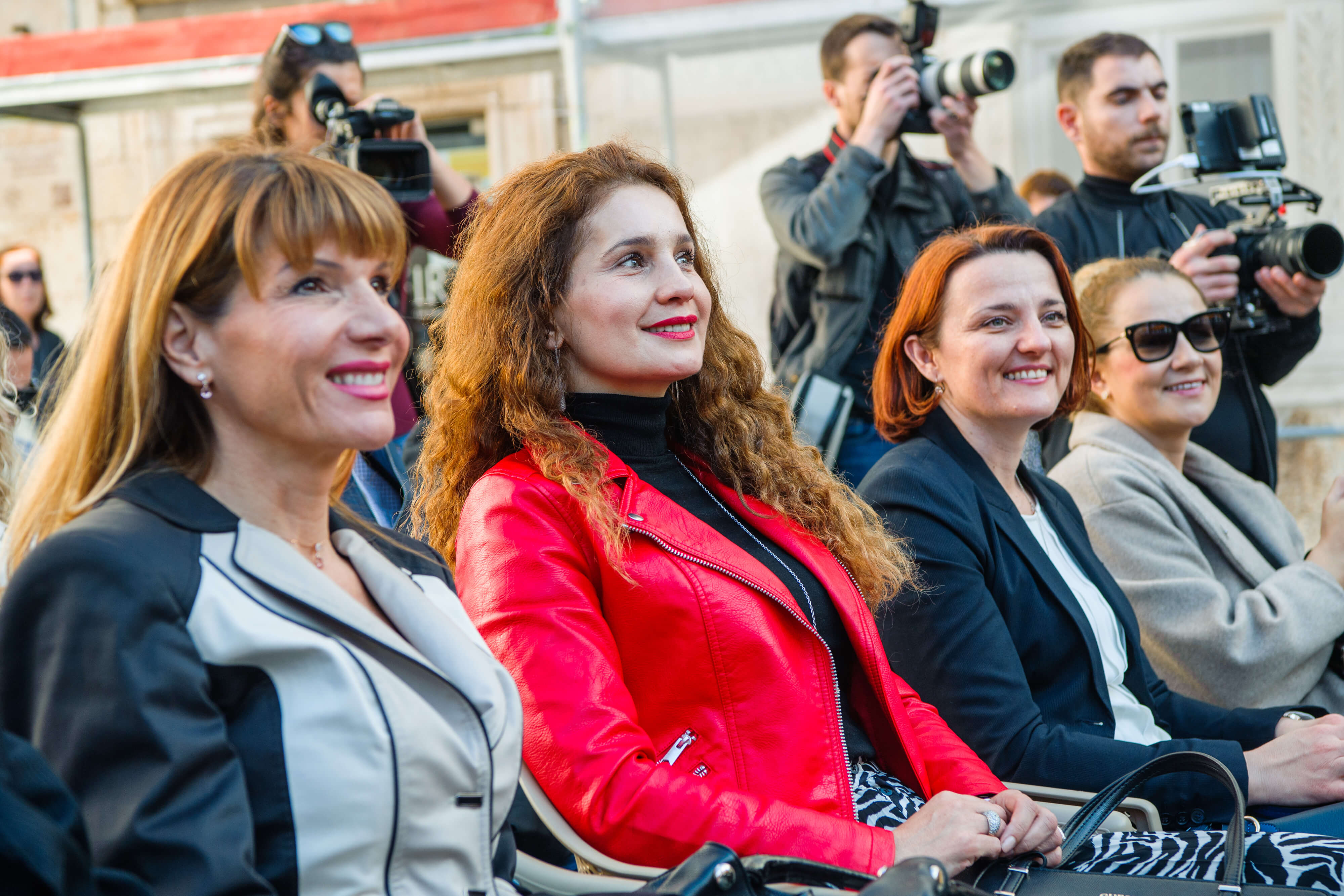
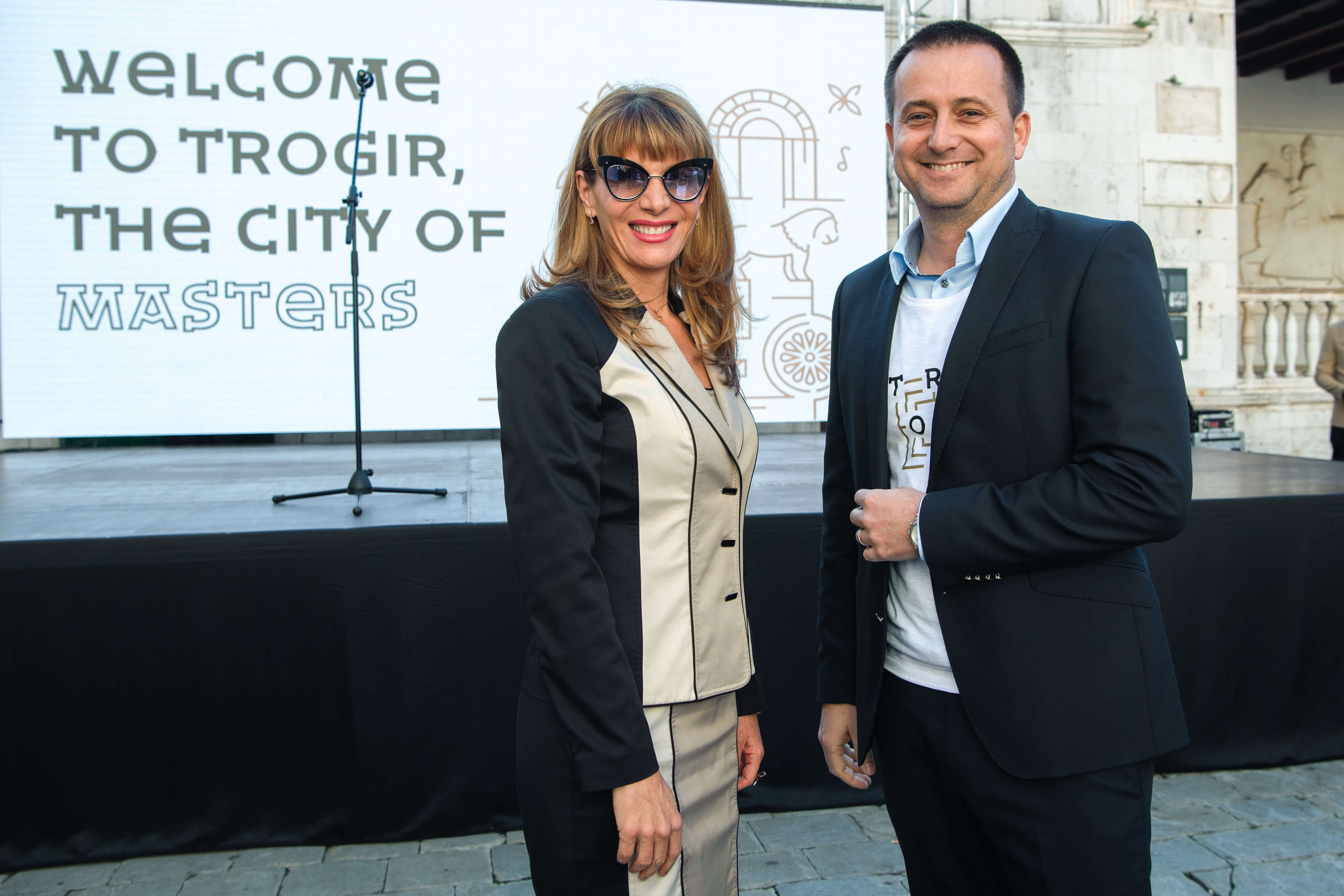
Find out more about Marked by Masters and Trogir's branding by watching the video below:
Follow our dedicated travel page for more information on Trogir, Marked by Masters and much more.
Kindness of Strangers and Safety: Croatia's Under-Promoted Tourism Jewels
October 11, 2019 - The land of sun and sea, but also the land of kindness of strangers and safety - Croatia's under-promoted tourism jewels.
One of the things I like about working in the media in Croatia is TCN's position of being local and being foreign - local knowledge with a foreign eye. It means that while we understand how things work in Croatia, we also have an understanding of what foreigners - and in particular - tourists are looking for in terms of information. One simple example of this was soon after we started Total Split.
As a foreigner, I knew how complicated and confusing it was for tourists looking to buy ferry and catamaran tickets, but as a local I knew how easy it was - locals had simply grown up with the system.
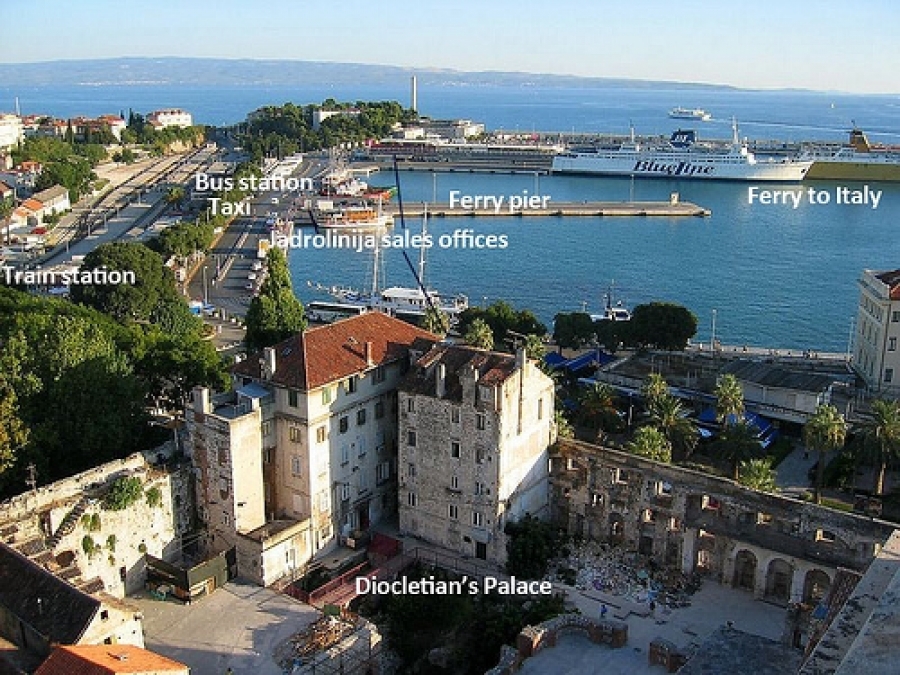
A simple guide for tourists ensued (and needs to be updated...), which has proved very popular over the years, with many locals seeing the value of it and placing a link on their accommodation websites.
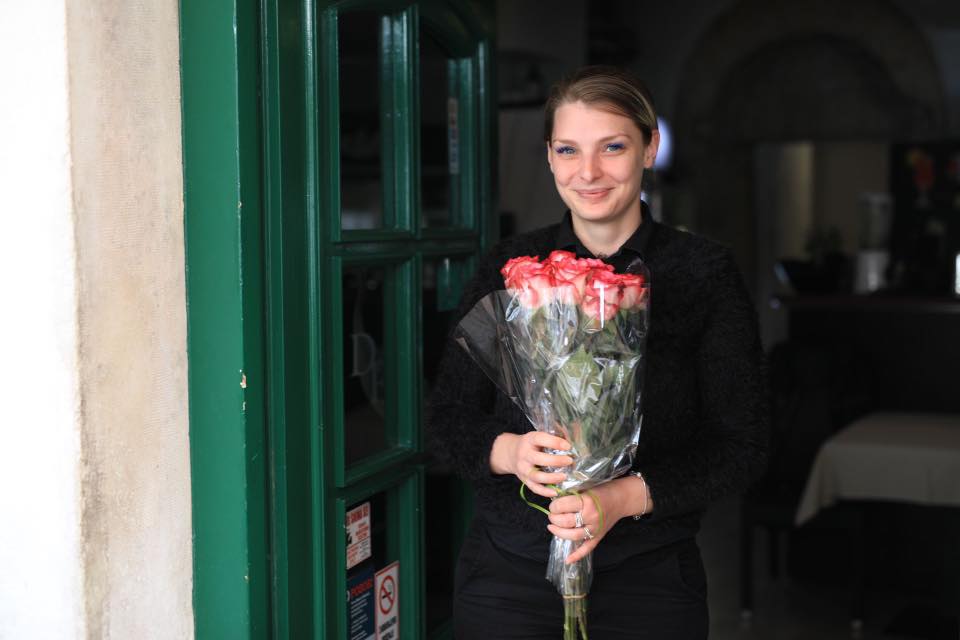
And so to last week. A tourist from Minnesota posted on his personal Facebook page about the kindness of waitress Ana from Restaurant Riva in Trogir. Having left his wallet at the restaurant the next day, he returned not expecting it still to be there with all the money inside. But that is exactly what he found as Ana returned the wallet to him. She refused a tip and so the tourist bought her flowers instead. A nice story which many locals would take as standard, for this kind of thing happens often in Croatia. And while it also happens in other countries of course, it is sadly increasingly rare in the Western world. Someone tagged me in the original Facebook post, suggesting it would make a great story. I agreed, and 20 minutes later, What Happens If You Leave Your Wallet in a Restaurant in Trogir, Croatia was live. Apart from telling the story, a chance also to put in some images of gorgeous Trogir and a link to a more detailed article on this UNESCO World Heritage Site.
Having learned how the Croatian media works after several years of running TCN, my work did not end there - a link sent to a couple of people with connections with the decision-makers in certain publications, and I sat back and watched the story unfold - Slobodna, Dalmacija Danas, Jutarnji, Index - a nice positive story to lighten the day.
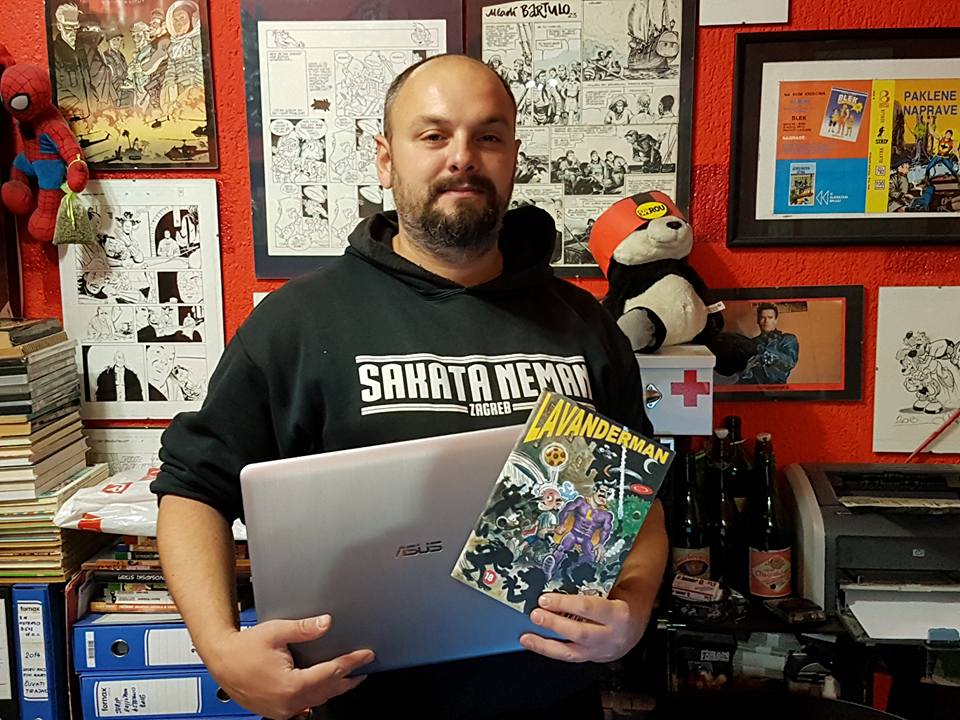
There were plenty of reactions to the story, and two of the main themes got me thinking. The first was the number of locals who didn't think that this was much of a story, for what Ana had done was second nature in Croatian society. And the second response was from the considerable number of people who added their own anecdotes of how they had left things - money, cameras, laptops - only to return and find them where they left them. Something which many concluded would simply not happen these days in their home country.
Every foreigner I know here has a similar story, and I have lost count of the number of times I have left something in a bar, only to return and find it still there. Perhaps my finest hour in this respect was last year after a cold one too many when I realised the next morning in Varazdin that my laptop had fallen out of my backpack somewhere in the streets of Zagreb. While I was contemplating how I would survive the loss of the machine that fed the family, I received a message on Facebook asking if I had lost a laptop in Zagreb. Expecting this to be the start of an intricate blackmailing process for cash, I could not have been more wrong. And two hours later, I was reunited with my laptop, one which had been repaired by the kind stranger who had found it abandoned in a street in central Zagreb. It is one of my favourite stories of my 17 years in Croatia.
The kindness of strangers is something I have become used to over the years in Croatia, as has the safety. Truly, there is no better place in the world to bring up children in those impressionable early years. Starting life on the idyllic island of Hvar, surrounded by nature, community and learning to swim at the age of three, childhood in Croatia is still As It Once Was.
I have had several conversations in recent weeks with returnee Croats, several of whom have returned with family. As a place to bring up family, Croatia was easily the safest option to bring up a family. There was no part of Zagreb I am afraid to walk late at night, said one, and I certainly couldn't say that of Sydney.
And with the digital and remote worker revolution around the corner potentially addressing one of the biggest causes of the crushing emigration in Croatia - jobs - a key aspect to making this happen is to communicate the message that Croatia is a safe place to bring up families, where the kindness of strangers is the norm and not the exception. While locals may realise that Croatia is a kind and safe society, the message needs to be exported.
This theme of how Croatians want tourists to see them and what tourists actually experience came into focus at the recent Croatia 365 conference in Zagreb. Katarina Milicevic from thinktank Think Tourism took the example of gastronomy. Many of the conference participants agreed with her suggestion that gastronomy was Croatian tourism's most important offer after sun and sea. As a scientist, Milicevic went on to present some results of social media analysis of the promotion of Croatian gastronomy in official tourism promotion. In a recent interview with Poslovni, Milicevic explained one of the reasons why Croatia's average tourism spend of 86 euro was a lot lower than some of the neighbours - while Croatia believed that it was a gourmet destination, it was doing a very poor job at projecting that gourmet image, so that arriving tourists were unaware.
According to the Milicevic interview in Poslovni, she analysed the social media of the Croatian National Tourism Board over 12 months, and the results told their own story of how gastronomy was perceived as a pillar of Croatian tourism excellence. Of the 1,100 Instagram posts, just 20 were related to food and wine, of the 440 Facebook posts, just 15 were related to gastronomy. Little wonder that tourists arrive with low gourmet expectations, perhaps.
The good news is that all this is easy to fix. Croatia, the lifestyle destination - for tourism, bringing up young families, remote living - it has so much to offer.
We just need to be a bit better at communicating the message of the treasures we possess. And the currency of the kindness of strangers and safety are increasingly in demand in this crazy world.
Thinking about moving to Croatia? Here is the Total Croatia Living in Croatia guide to give you a little more info.
What Happens If You Leave Your Wallet in a Restaurant in Trogir, Croatia?
October 8, 2019 - A heartwarming tale of honesty from a Minnesota tourist visiting Trogir.
One of the first things expats will tell you about the benefits of living in Croatia is just how safe it is. From walking around late at night to letting children play outside, Croatia seems (happily) to have been caught up in a time warp of the past where some of the less savoury aspects of modern life rarely occur in Croatia. Murders and violent crime are rare, as is theft (unless you talk on the State level...). I remember reading in the regional news a few years ago about the theft of a few litres of olive oil from a resident's garage - that is the level of crime epidemic we are dealing with.
When I first moved to Hvar, I never locked my house, and neither did many of the neighbours. There was simply no need, and it was easier for the postman to enter (as he did) if he had a package to deliver while you were out or sleeping. I know of many foreigners and diaspora who have moved to Croatia to bring up their kids in a safer environment.
And part of that safety comes with honesty. I have lost count of the number of times I have left my laptop in a bar after a cold one too many to find it just where I left it. There was even my favourite story of the postman who liked a drink or two who left the town's pension money on a cafe table as he went off to do his rounds. He was more than a little relieved to find it being looked after in the cafe two hours later. And for my personal ultimate experience, this is what happened when I dropped my laptop on the streets of Zagreb and only noticed the next morning.
And so to the reason for this post and the identity of the lovely lady above. Perhaps it is best told through the words of tourist John Kaul from Minnesota, a region with a sizable Croatian population of its own. John was apparently enjoying his holiday in Trogir when disaster struck:
This is Anna. She works in a restaurant in Trogir, Croatia. Yesterday was not a red-letter day for me. I dropped my camera and damaged a lens. Then I left my wallet at a restaurant the same evening. The next morning when I returned to the restaurant in a state of near apoplexy she comforted me by rejoining me to my wallet. Everything was there. I tried to thank her with a big tip. She would have none of it. So, I went off to a local market bought her these flowers. She said that I had made her very happy. Not nearly as happy as she had made me! I love Croatia and Croatians are the warmest and most honest people on earth.
Great story - if anyone knows the name of the restaurant, please let me know and I will add, so that others may enjoy Anna's fine service and hospitality.
I loved some of the comments below John's post:
When I got to Croatia the first time I said "my family left this place for the Iron Range of Minnesota??? You've got to be kidding me!" lol! It honestly is a magical place to me. I am glad you have been enjoying your vacation!
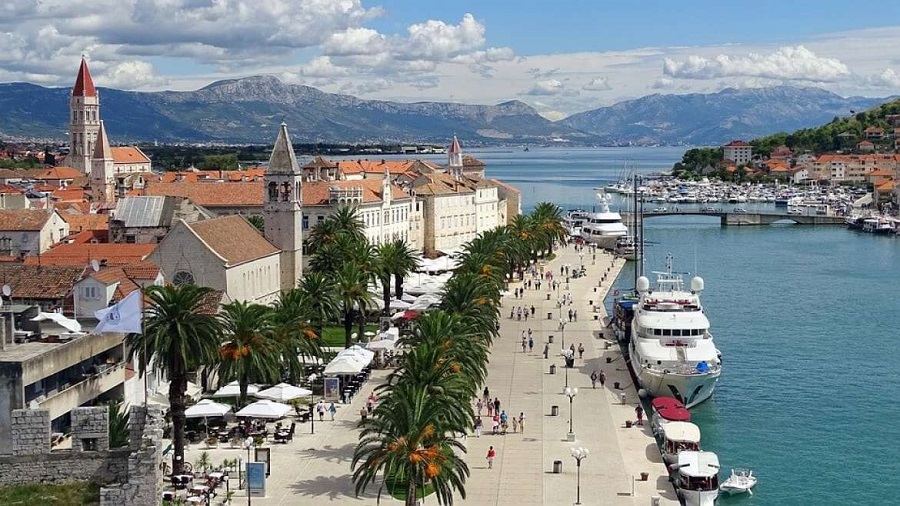
You have heard about the lovely people of Trogir, now meet the town, a stunning UNESCO World Heritage Site close to Split. Learn more in the Total Croatia Trogir in a Page.
1.4 Billion Kuna Agreement Signed for Water Supply in Kaštela and Trogir
ZAGREB, October 4, 2019 - A 1.43 billion kuna (€193 million) co-financing agreement for the construction and reconstruction of the municipal water supply infrastructure in the Kastela and Trogir agglomeration was signed in Split on Thursday. The work should be completed by December 2023.
The agreement was signed by Environment and Energy Minister Tomislav Ćorić, the CEO of the Hrvatske Vode water management company, Zoran Đuroković, and the CEO of Split's "Vodovod i Kanalizacija" company, Tomislav Šuta.
The project provides for the construction and reconstruction of more than 125 kilometres of the water supply network and over 230 kilometres of the public drainage system. After its completion, over 8,600 households will be connected to the public drainage system and over 1,600 households to the public water supply network, Minister Ćorić said.
About 70 percent of the project cost will be co-financed through the EU operational programme "Competitiveness and Cohesion 2014-2020."
Also signed was a 16.1 million kuna (€2.17 million) co-financing agreement for the construction of municipal water supply works in Lećevica, a village in Split-Dalmatia County.
More Trogir news can be found in the Lifestyle section.
Eight Summer Stages in Split Area to Revitalize Cultural Heritage
September 5, 2019 - Eight summer stages in the Split area, worth 27.8 million kuna, will provide additional facilities for locals and tourist attractions.
On September 3, 2019, Minister of Regional Development and EU Funds Marko Pavic decided to finance the ITU strategic project "Open Summer Stages of the Urban Agglomeration of Split", which provides a non-refundable HRK 27.8 million from the ITU mechanism.
The project will revitalize cultural heritage and will provide additional facilities for locals and tourist attractions through the construction, renovation, and furnishing of outdoor summer stages at eight different locations. The construction, renovation and furnishing of the open summer stages, accompanying facilities and facilities for cultural and tourist purposes, will be carried out at the following locations in the cities of Solin, Trogir, Kastela and Omis and the municipalities of Klis, Dugopolje and Lecevica:
• Solin: renovation of Gradina, stage construction;
• Solin: renovation and construction of the Cultural Information Center and renovation of the square;
• Klis: remodeling two buildings and repairing the walls of Klis Fortress, 3D mapping, stage construction;
• Omis: renovation of the “Old Cemetery”, stage construction;
• Dugopolje: the summer stage near the church of Sv. Rocco;
• Kastela: renovation of the Dudan Park in Kastel Kambelovac, stage construction;
• Lecevica: renovation of the old wells in the village of Radosic, stage construction;
• Trogir: summer stage in the old town.
The project will increase the level of preservation and landscaping of these attractions, and modernize the existing facilities, while raising the quality of the cultural heritage and its long-term and sustainable use for the inhabitants of the Urban Agglomeration of Split and all visitors to the area.
The success of the project is based on the identification, activation and cooperation of local development potential with an emphasis on the efficient use of resources in planning and managed development in the area of Urban agglomeration Split.
Recall, this news comes after the City of Split has announced a competition for a new multipurpose hall for cultural and social content, which will be located in the city center. The hall should begin operating in the 2020/2021 season. The process began Monday through public consultation, according to the City.
The hall is designed as a multipurpose hall and will be able to hold cinema screenings, theater performances, cultural and musical events, conferences and congresses. It will have an independent entrance via the main staircase from the outer space, it will be accessible to disabled people and persons with reduced mobility, and will boast a capacity of 168 seats.
To read more about lifestyle in Croatia, follow TCN's dedicated page.
8.5 Million Kuna Granted to Develop Coast in Omiš, Trogir, Kaštela and Tučepi
HRTurizam reports on August 27, 2019, that based on the Decision on the allocation of funds from the Co-financing Program for Capital Projects on the Maritime Property in Split-Dalmatia County for 2019, the County Prefect Blaženko Boban signed contracts worth HRK 8.5 million with the mayor of Omiš Ivo Tomasović, Deputy Mayor of Trogir Ruža Kovačević Bilić, Deputy Mayor of Kaštela Grgica Benutic and Ante Čobrnić of Tučepi.
The city of Omiš received HRK 1.5 million for landscaping Brzet beach, the city of Trogir HRK 3 million for the construction of the breakwater of Brigi Lokvice sports harbor, and HRK 2 million to Kaštela for landscaping the Glavica bay in Kaštel Lukšić. The Municipality of Tučepi also received HRK 2 million to improve the coastal zone from the marina to Gospin creek, all with the aim of strengthening the competitiveness of Split-Dalmatia County through the development of coastal and marine infrastructure, as well as strengthening the tourist and economic resource base.
“It is well known that our County manages one-third of the total maritime domain of the Republic of Croatia. It was not easy to do all the preparatory work because only projects that have been awarded a
building permit were financed, and the projects were co-financed in the ratio of half of Split-Dalmatia County, half of the units of local self-government. In this way, together with the local self-government units, we will change the overall view of our coastal towns. Therefore, let the contracts signed today be an incentive for other local communities to participate in such county competitions,” said Blaženko Boban.
Stipe Čogelja, Head of the Maritime and Tourism Managing Board, emphasized that the County has already prepared all the relevant strategic documents for beach management, from the Tourism Capacity Plan to the Beach Management Plan, and announced the development of the Integrated Coastal Zone Management Plan foreseen by European Directives which only Šibenik-Knin County has so far.
"We are ready for a new EU financial perspective from 2021, to apply for even more funding for sustainable coastal zone management," said Čogelja.
To read more about travel in Croatia, follow TCN's dedicated page.
Albert II, Prince of Monaco Sails into Trogir on Super Luxury Yacht
As Morski writes on the 15th of August, 2019, the Croatian Adriatic has become mega-popular among the world's jet-setting elite. While Bill Gates is currently sailing around in the Zadar area, after a visit to Hvar, the luxury yacht ''Arience'' carrying no less than Prince Albert of Monaco arrived in Trogir.
"Prince Albert of Monaco is a guest in our city, let it be known!" A reader from Trogir informed Morski.
Albert of Monaco officially visited Croatia on April the 21st, 2009, and met with then-President Stipe Mesić. His visit remained marked in memory by his kind and humanitarian gesture of helping Croatia to clear its remaining landmines.
Prince Albert II. (full name Albert Alexandre Louis Pierre Grimaldi), is the current Prince of Monaco and head of the Grimaldi Dynasty. Son of Rainier III. and Hollywood actress Grace Kelly. Since 2011, he has been married to former swimmer Charlene Wittstock, with whom she has two children, Princess Gabriella and Prince Jacques.
Albert also has two other children with two women, daughter Jazmin Grace and son Alexandra Costu, who cannot participate in the legacy of Monaco's glorious throne because they were born outside of marriage, although Albert readily acknowledged paternity.
Interestingly, he participated in five Olympic Games from 1988 to 2002 as a member of the national bob team. He has been a member of the International Olympic Committee since back in 1985 and is chairman of the Monaco Olympic Committee.
His luxury 61-metre-long yacht, with which he sailed into the Dalmatian town of Trogir, is worth an incomprehensible 80 million US dollars, and the weekly rental of this boat is an equally mind-boggling 650,000 US dollars.
The vessel, Arience, offers accommodation for twelve guests in six cabins. Its interiors and exteriors were designed by Reymond Langton. The luxury yacht also boasts a movie theater, a plateau which acts like its own waterfront by the sea, a large club, a whole deck for the owner and several open plan living areas with spa pools.
It is powered by engines of 2005 HP each, giving it a maximum speed of 16 knots and a cruising speed of 13 knots. The perfect way to experience Trogir from the sea.
Watch a video of this gorgeous vessel here:
Make sure to follow our dedicated lifestyle page for much more.
VIDEOS: Chaos on Streets as Summer Storm Rips through Split
August 3, 2019 - When the forecasts projected a change in weather this weekend, they weren’t kidding around. A look at how this summer storm swept through the Split area.
A rumbling thunderstorm with powerful and blustery winds ripped through the Split area around 10 pm on Friday. The air temperature dropped to just 19 degrees Celsius in a short time - for comparison, the highest daily temperature on Friday was 32 degrees Celsius, Slobodna Dalmacija reported.
“It came from the northwest and descended to Dalmatia. The announced front is crossing our area,” confirmed DHMZ in Split on Friday evening.
The highest recorded wind gusts in the Split area were 104 km/h, according to DHMZ.
People were warned not to go outside, and those who found themselves outdoors were asked to seek shelter as soon as possible.
However, on a Friday night in the peak season, we know that’s an impossible ask.
A look at the scenes on the Split Riva on Friday.
"There was panic in the city. The outdoor terraces were cleared within minutes. Guests ran away without paying their bills," one reader told Slobodna Dalmacija.
The storm also turned one building in the Pujanke area of Split into the house of horrors!
At the nearby Star Village of Mosor, Crometeo measured hurricane-like gusts of wind up to 148 km/h!
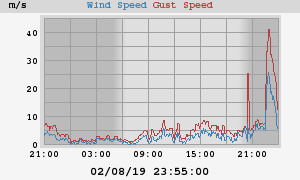
The wind carried garbage containers into parked cars.
And made everyone in the warmth of their homes thankful they chose not to go out that night.
After the storm, the Center 112 received numerous calls from citizens reporting fallen trees on the roads, while some reported that they were trapped in an elevator because some parts of the city briefly ran out of power, reported Slobodna Dalmacija.
Some facilities were left without roofs, and most of the calls came from Split, Solin, and Kaštela.
Many calls for help from the sea were also received Friday night.
“We have a lot of calls, and just in the area of Split we have reports of five accidents, and maybe 20 in the whole Adriatic,” said the Port Authority of Split on Friday. No injuries had been reported on Friday night, though more information will be known on Saturday morning.
The KulaKula festival was also held in Trogir on Friday night in Kamerlengo castle. The storm hit as local favorite Vojko V was on stage. The storm cut out the sound, but Vojko boldly continued his concert in an unplugged version.
However, the storm became worse and started to pick up chairs, umbrellas, equipment, and branches. The audience then began running away from the concert venue, and as one Dalmacija Danas reader said, there was a lot of panic on the way out.
Fortunately, the weather forecast for Saturday is looking much more favorable.
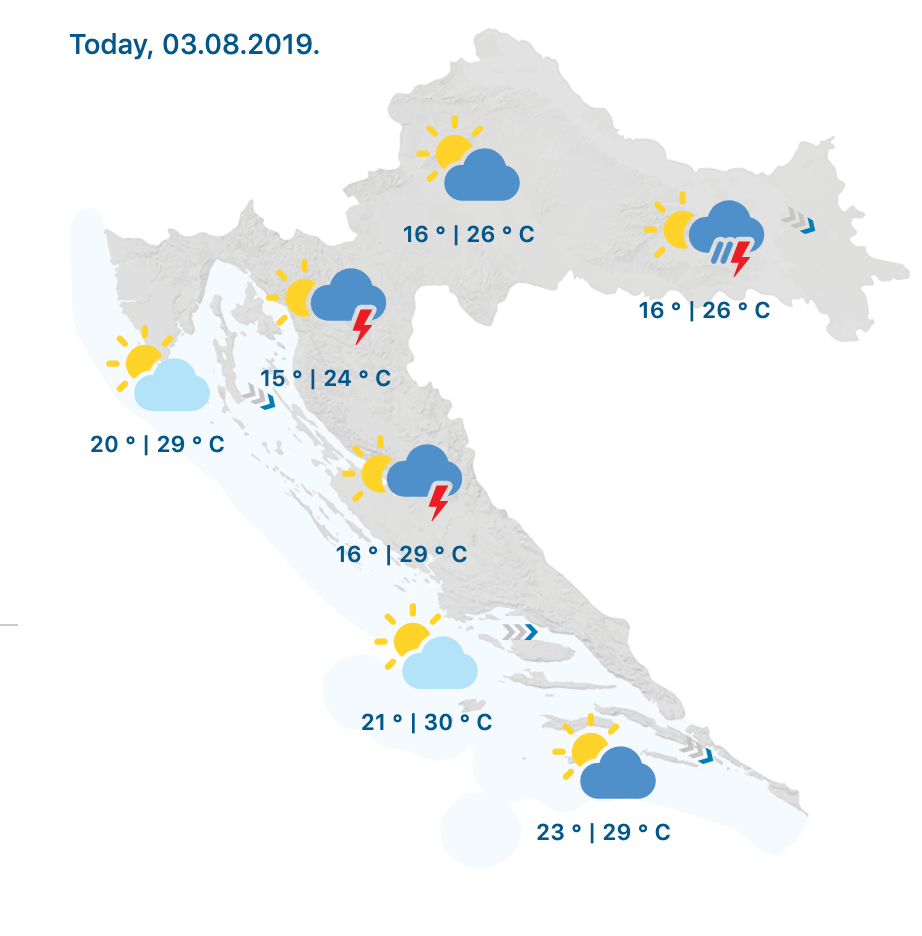
You can follow the weather report here.
To read more about lifestyle in Croatia, follow TCN's dedicated page.
Split Police to Approve Placement of New Surveillance Cameras
Big Brother may well be watching you in and around the wider Split area as local police approve a significant number of brand new surveillance cameras in numerous locations within that aforementioned area of central Dalmatia in the name of heightened security.
As Poslovni Dnevnik writes on the 17th of May, 2019, the Croatian police in Split-Dalmatia County will issue their approval if all of the necessary conditions for the placement of the new surveillance cameras are met, and if they deem that the setting of the new video surveillance system will positively affect the level of general security of people and property.
The Split Police Administration has stated that approvals have already been issued for the installation of new surveillance cameras in the nearby areas of Trogir and Solin.
As Slobodna Dalmacija reports, as of the beginning of 2019, the Split Police Inspectorate has issued two approvals for the placement of video surveillance systems in Trogir in 23 locations and in Solin in a further 10 locations. Before the new approvals came, Solin had received police approval for three cameras, and this year Solin requested a police review of locations where the administration could set up three times as many such devices.
Should local police give the green light to the new surveillance camera locations and agree that their placement would be beneficial to the area's overall safety and security levels for both people and for property, then all of the approvals will be given. In previous years, licenses were granted to Split for fifteen different locations, Solin received approval for three locations, Makarska got the green light for six locations, Hvar was okayed for twelve locations, Sinj was approved for one and the Lovreć Municipality received approval for four locations.
Make sure to follow our dedicated lifestyle and Total Split pages for much more.

